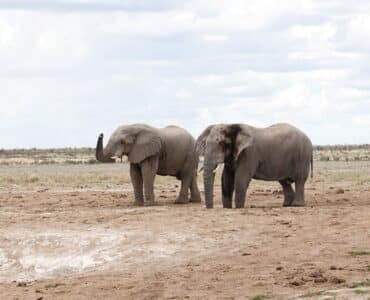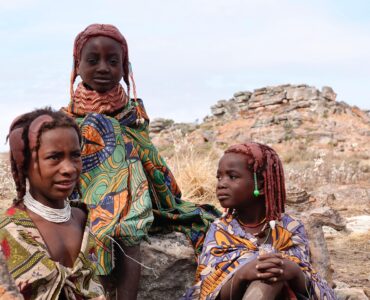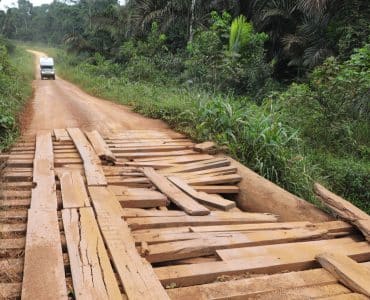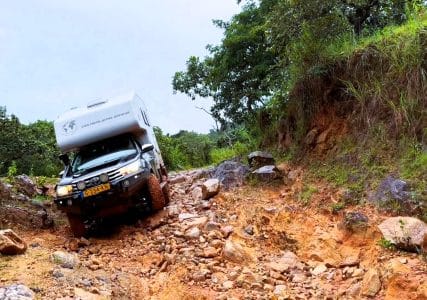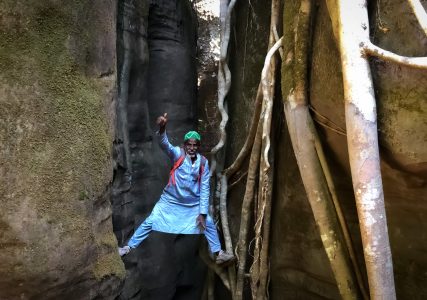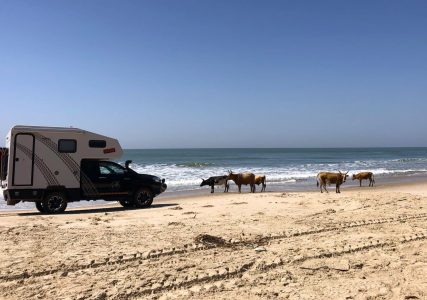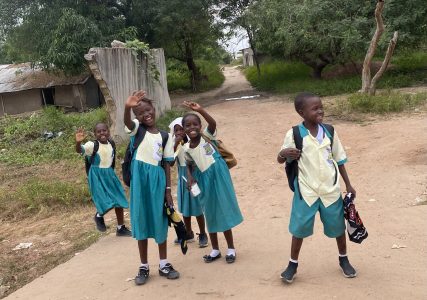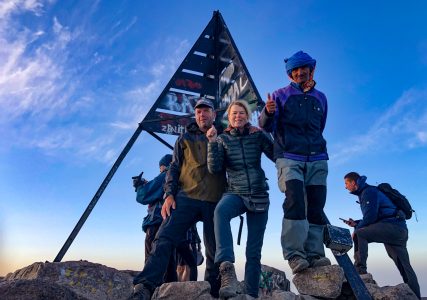We (Cor and Grietje van NoFear Travel), travel with our Toyota Hilux 4×4 camper by Africa. The African continent is the Mecca for 'overlanding' with many challenging routes and beautiful destinations. The first African country we visited during our trip to South Africa is Morocco, followed by Mauritania, Senegal, Guinea, Sierra Leone, Liberia, Ivory Coast en Ghana. After a stopover in the Netherlands, we continue our overland journey through Africa, starting with Togo and Benin. You can read all about it in this article.
Naturally, you can also start watching the video again.
Plan your holiday to Africa here
- Itineraries you can compare + request quotes Africaplus, Africa tailor-made, Djoser, king monkey, rickshaw travel, sawadee en shoestring.
- Flight tickets for Africa you book through Skyscanner.
- Hostels, Hotels and Resorts in Africa you book Booking.com.
- Rental cars : Sunnycars en rental cars.
- Tours and Activities in Africa you book through GetYourGuide.
- travel items such as suitcases, bags and more you can buy at Bol.com.
- SIM cards for Africa you buy extra International sim.
- Parking at the airport you can arrange via Parkos, park care of iParking.
Overlanding in Togo
About Togo, some background information
To be honest, until we started preparing our trip a few years ago, we had never heard of these countries. But discovering new regions is “our thing”, so bring it on!
Togo is slightly larger than the Netherlands and has almost 9 million inhabitants. The largest part is Christian (48%) and a smaller part is Islamic (12%). A considerable part also adheres to indigenous religions, linked to cultural customs.
French is the official language, but we noticed that many people do not speak French. Like us.
The country is elongated and therefore has only a limited coastal strip. Inland you will find many authentic villages where coffee and cocoa are grown.
Togo is also a country where a large part of the population lives below the poverty line. This is often seen in rural areas.
Border crossing from Ghana to Togo
From Ghanaian Accra we take the southernmost border crossing. The border is quite chaotic because it is nowhere clear which office you should have first and last. The fixers and money changers do come at the syrup like flies and it takes us some effort to shake them off. For Togo you can buy a visa at the border. (€ 38,00 pp.) At the last office, the officer asked for a contribution of 4000 Cfa (€ 6,00) for putting a stamp. But upon requesting a receipt we were able to go without paying. Oh well, they're just trying...
After we have crossed the border, we immediately enter the hustle and bustle of the capital Lomé. The main roads are paved and the huge number of mopeds fly around you on all sides. The traffic is quite chaotic but we make our way through it in search of an ATM.
We found it fairly quickly and intend to leave the city soon in search of quieter places.
Even before we could leave the city, we were stopped by the police on a busy road past the presidential palace. The officer told us that we were not flying a Togo flag and that it is mandatory on this road… He threatened to take us to the police station and then we would have to wait two weeks before we could get our car back.
But none of this was necessary if we were to pay him now. After asking for a receipt we were able to go…without paying…
That's Africa!
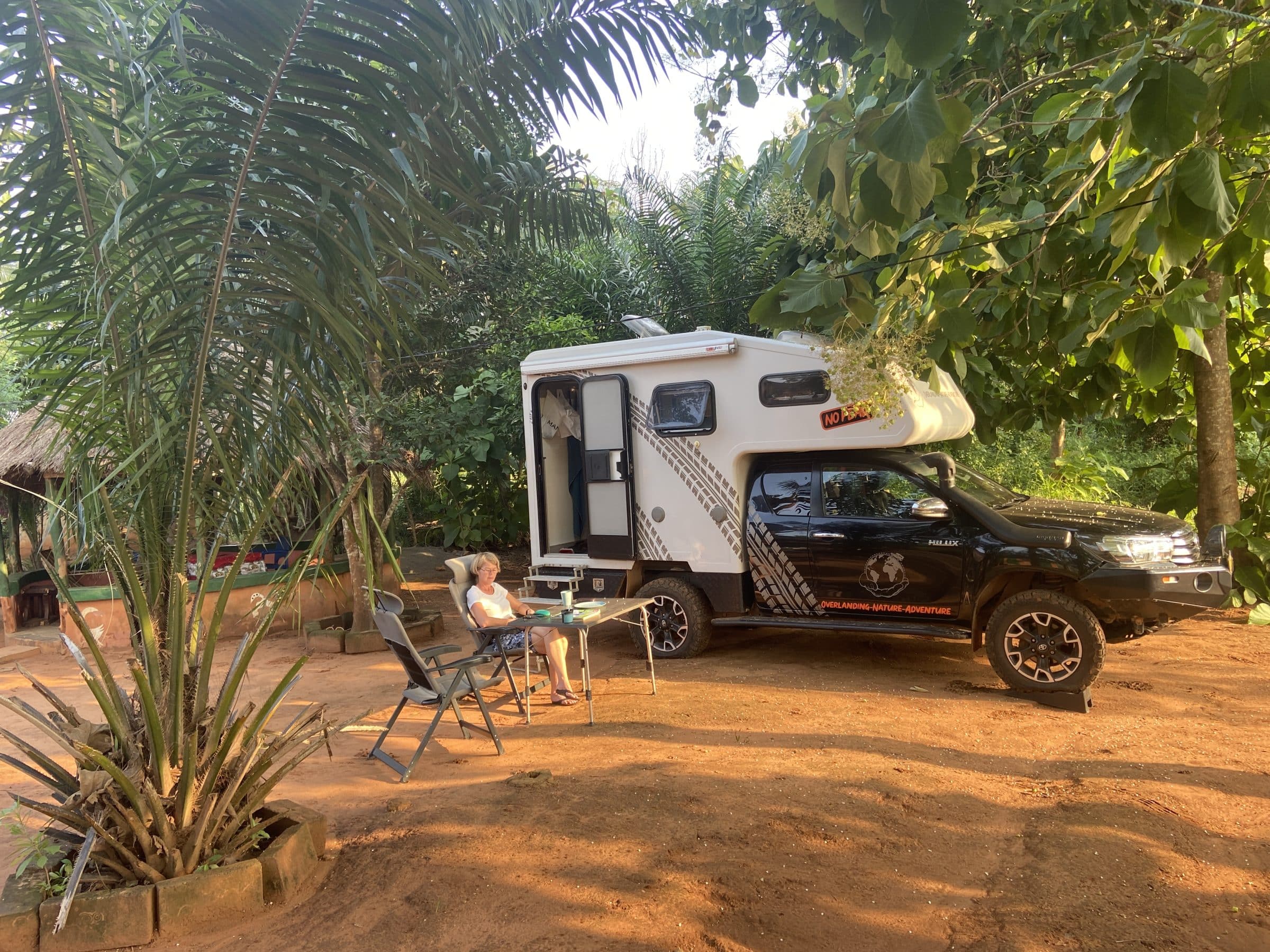
Davedi
In the small village of Davedi we have a lodge in mind where we can spend the night in our camper on the site. We may find it difficult, but just asking produces a horde of village boys who want to lead the way. They lead us on a path that is challenging even for a 4×4. When a branch appears to hang too low, one of the boys climbs like a monkey in the tree and cuts the branch away. And so we reach our hideaway for the night.
As so often, the village children quickly spot us and accompany us until dark.
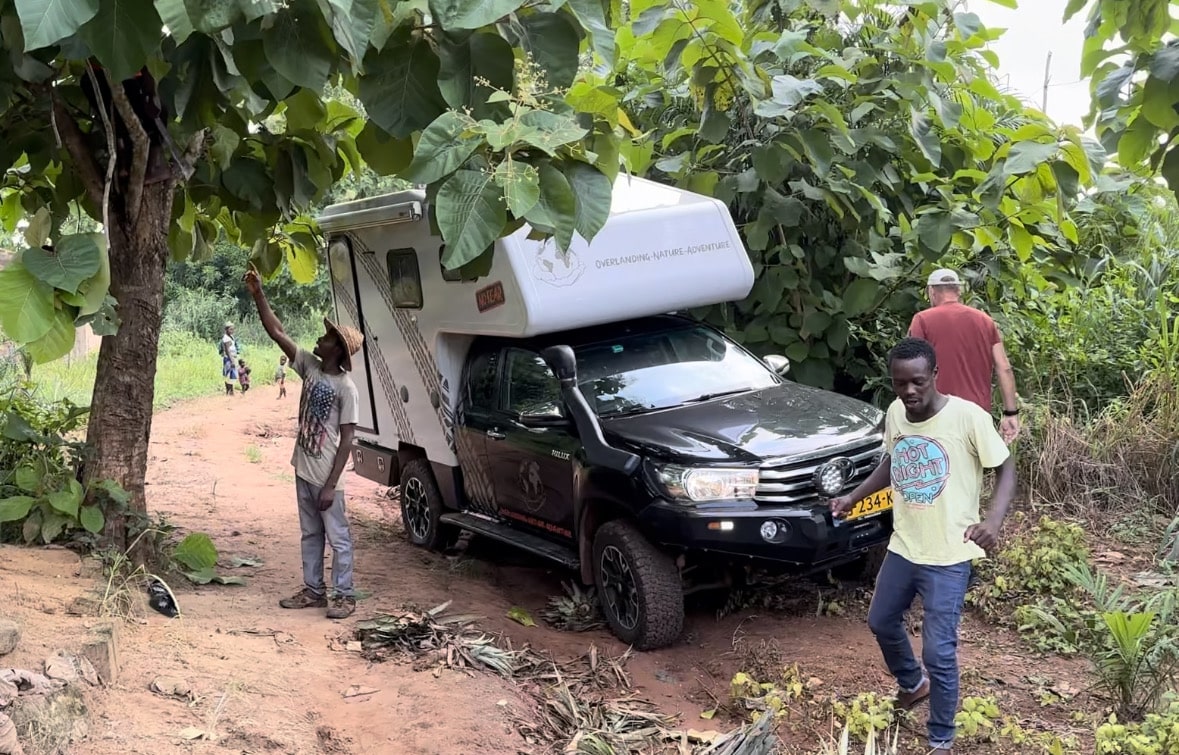
Via, via we are pointed to a guide who can lead us through the village. We walk around pleasantly, talk to various residents and take a look at the school.
We also witness a cultural ritual performed by two elderly ladies. They wash and care for wooden dolls that have to replace deceased (twin) children. Bizarre!
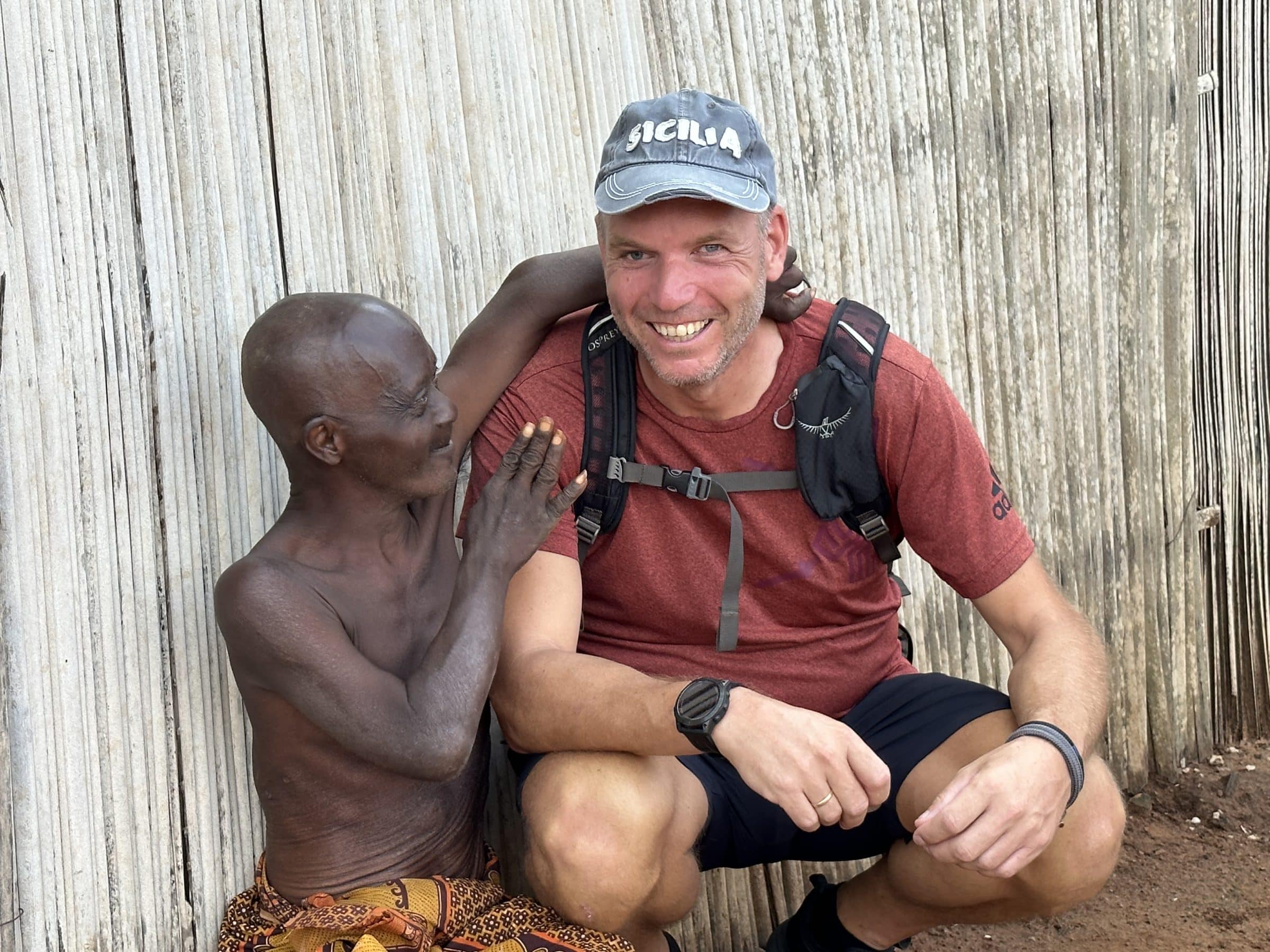
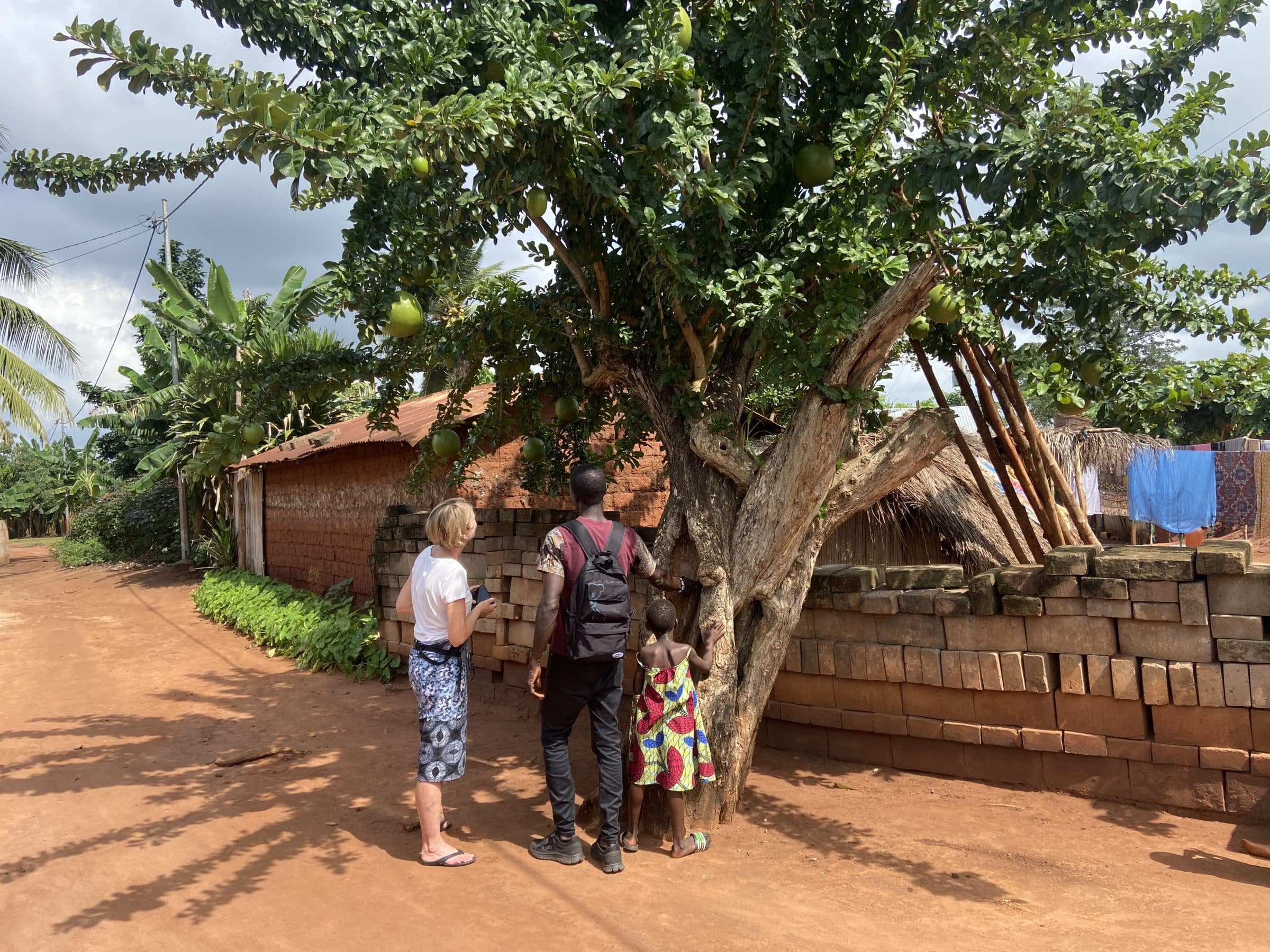
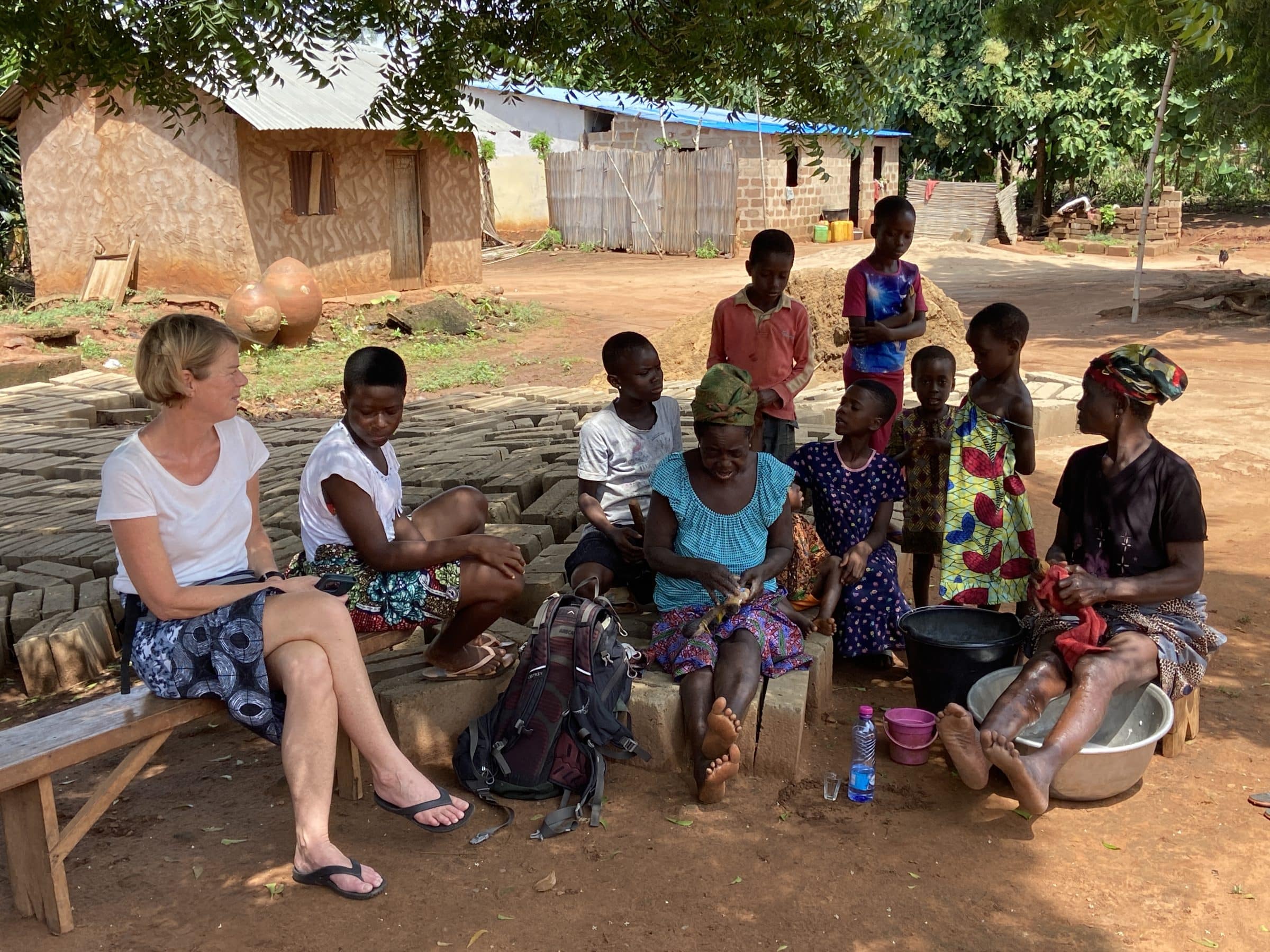
Stranded overlander
On our way to the north of Togo we follow a mountain route along the western border of the country.
Here we meet the German overlander Philip who stranded here in 2020 due to the covid pandemic.
He lingered here and from that moment on he started living self-sufficiently. With some old roofing sheets he built a shelter where he cooks. He still sleeps in the old truck he came here with. Several overlanders now visit him and he enthusiastically talks about his self-sufficient life.
We are invited to his place to taste his piglet, which was slaughtered yesterday. And indeed, together with the rice, cabbage and avocados we enjoy a delicious alternative meal. It is wonderful to exchange stories in the middle of the bush.
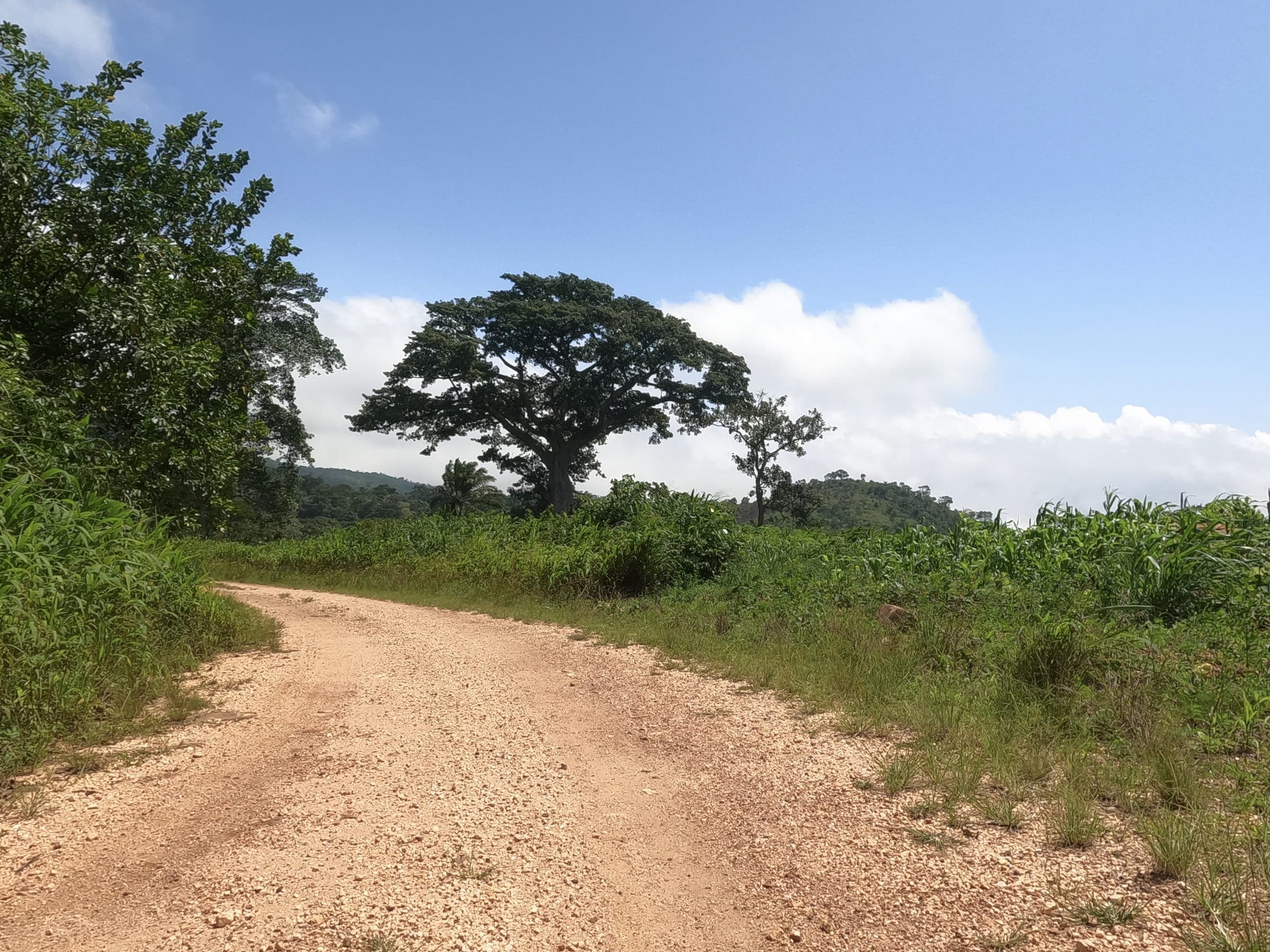
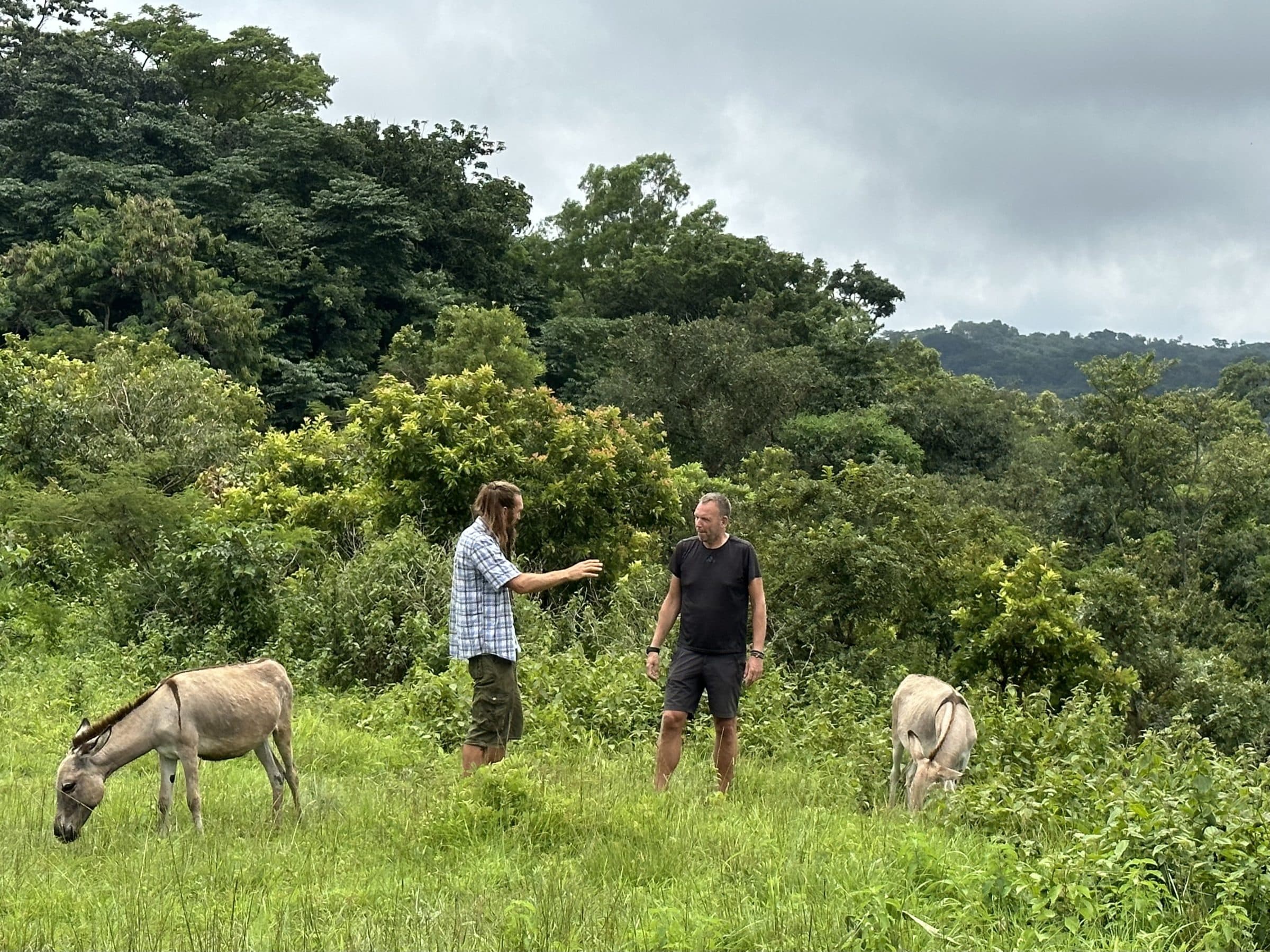
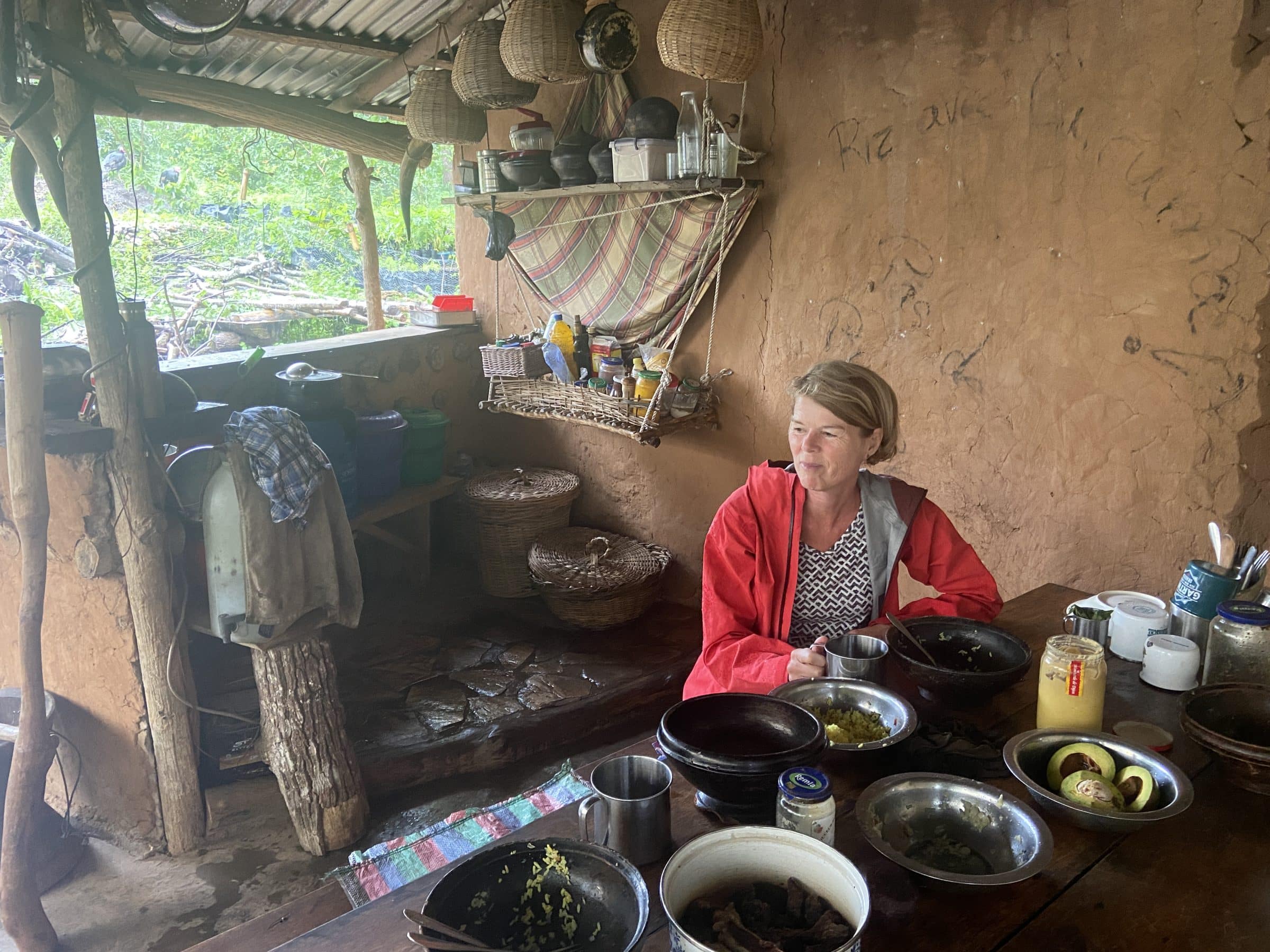
Hidden waterfall
Philip tells about a waterfall a little further in the forest. After some searching in the dense rainforest we find the waterfall….the last part we go towards the sound. We find the waterfall in a beautiful spot in the middle of lush nature between the cocoa and coffee trees. Because a heavy downpour has just fallen - it is now the rainy season - we can see the waterfall in its full glory.
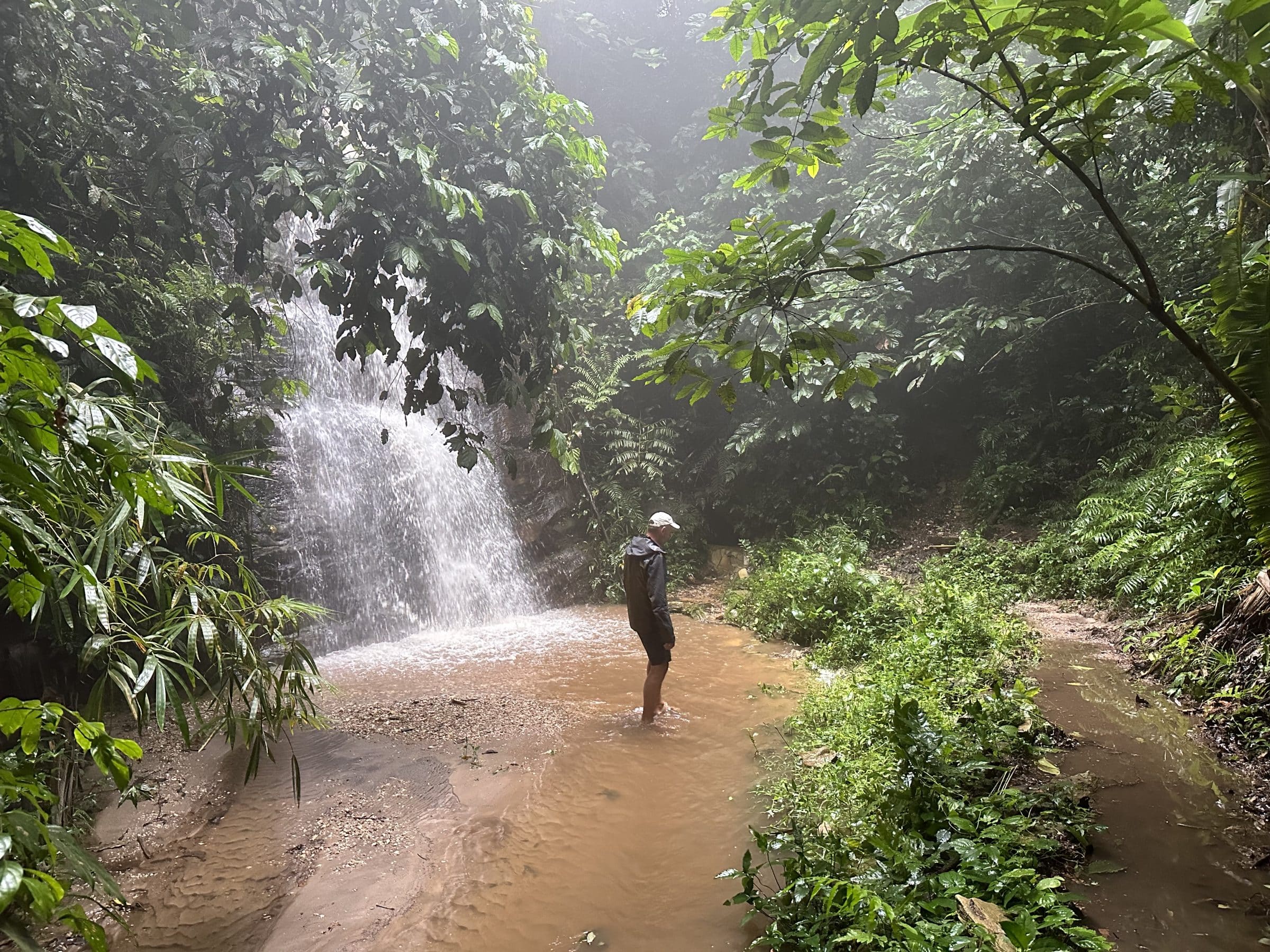
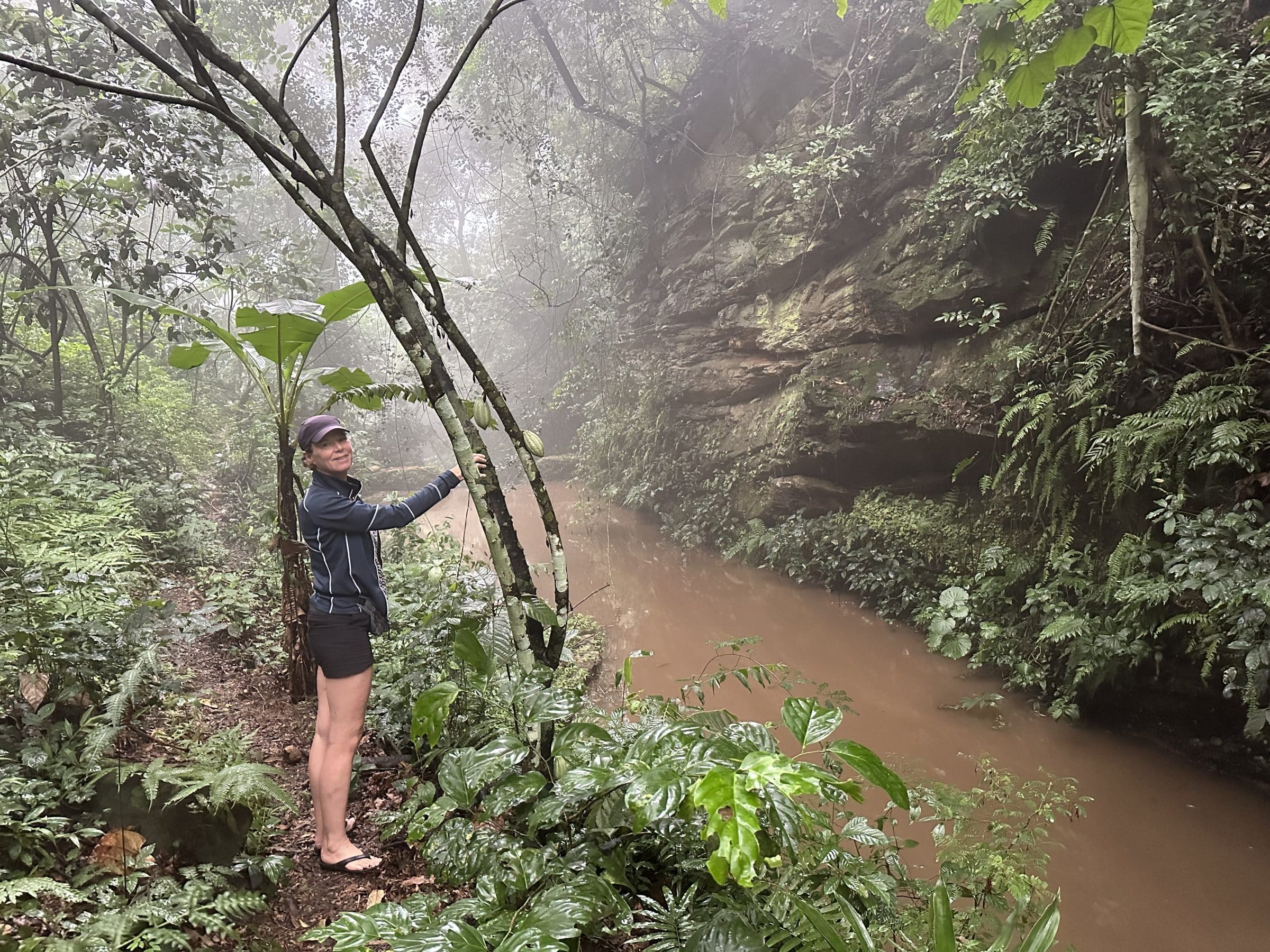
Aledjo Cadara
Togo is a collection of very friendly people. Wherever you go, you will be waved at, often with two hands. This is also the case in the highest village of Togo, in the northern regions at about 850 meters, Aledjo Kadara.
We were looking for a place to stay and just asked someone on the street if we could park somewhere in the village. A man got on his moped and drove us to the highest point of the village. Here's a platform where we could stand. We were treated to a beautiful view over the village with the surrounding mountains. On top of the plateau are two ruins, or rather two completely overgrown, unfinished villas. According to the village man, owned by Germans who no longer looked back.
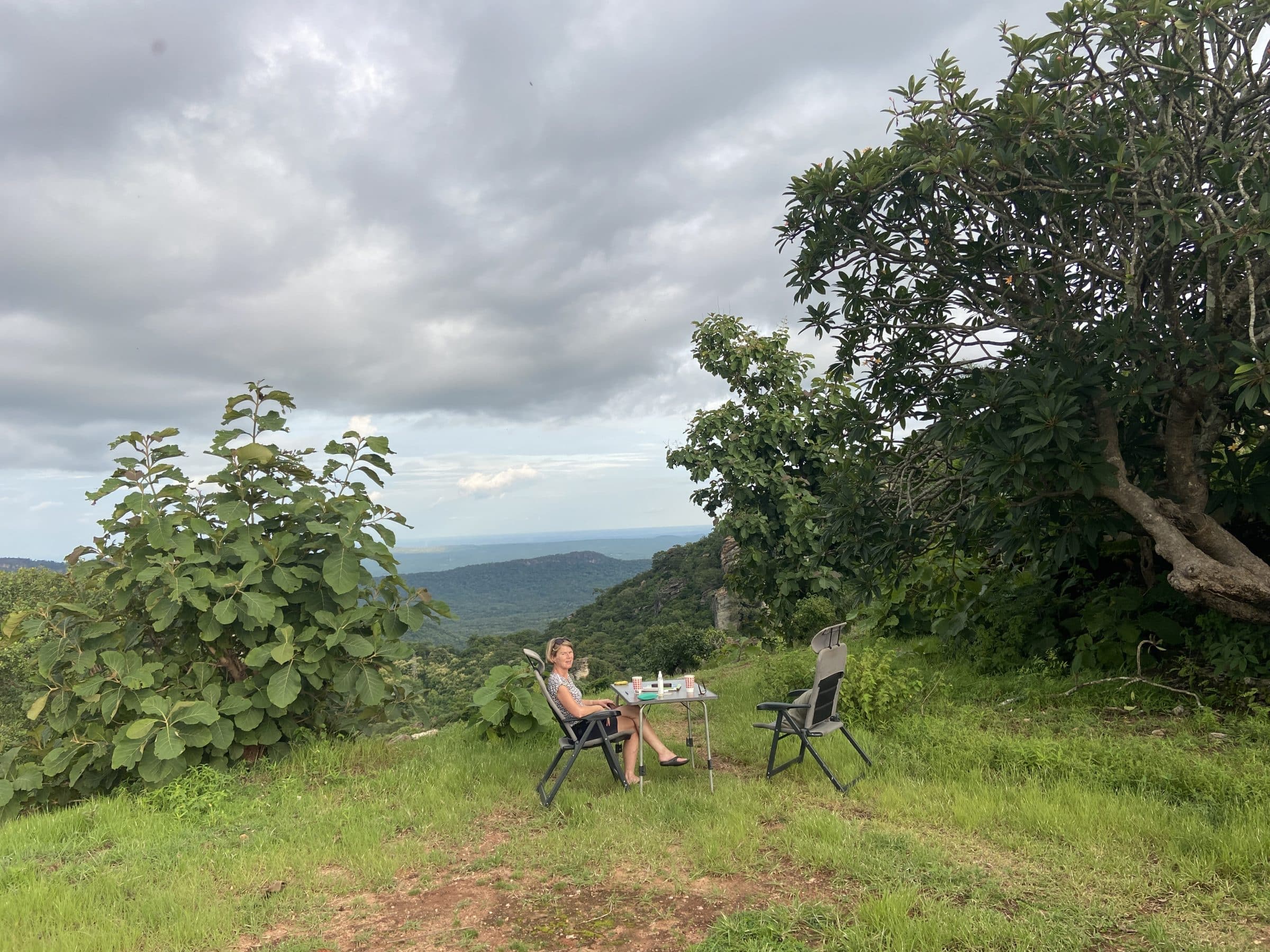
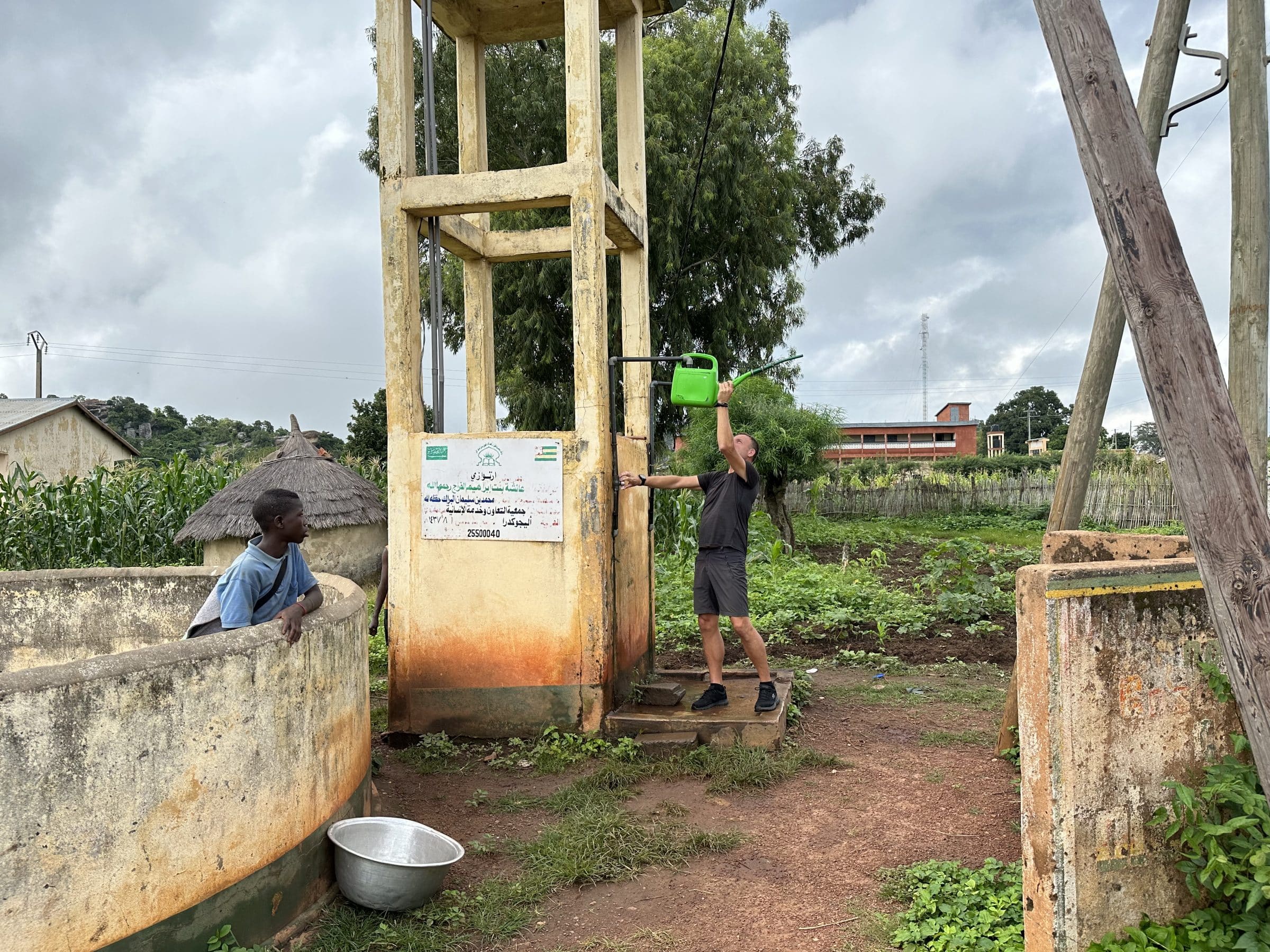
Benin
About Benin, some background information
Benin is almost 3 times the size of the Netherlands and has around 13 million inhabitants. The country is sandwiched between Togo and Nigeria and is bordered on the north by Burkino Faso. On the south side is a limited coastline.
In the south, the capital Porto Novo is not far from the economically most important city of Cotonou.
The many different population groups speak just as many indigenous languages, while the general language of communication is French. However, we noticed that not everyone is fluent in French. (Like us)
Islam and Christianity occupy an important place as religions. But for us, the Voodoo culture and traditions are the most striking, which is often combined with Christianity.
Border crossing from Togo to Benin
In the north of Togo we took the border crossing to Benin at Nadoba. The smallest and quietest border crossing we have seen to date. When crossing a border, we always want two exit stamps and two entry stamps, for both the carnet de passage (import/export car) and our passports. So we often need at least 4 offices. Sometimes supplemented with registration by the police, purchasing car insurance, purchasing a visa or checking vaccinations. At this border it remained with the first mentioned 4 offices, which were at least 10 kilometers apart.
We could have already arranged the visa for Benin online.
Tata and Somba
Already on the Togolese side of the border we could have seen the special architectural style of the houses in an open landscape. These so-called Tata buildings are on the UNESCO World Heritage List. The historic buildings served as a safe home and storage place for animals and food supplies. They are on both the Togolese and Beninese sides of the border. The houses were and are inhabited by the Sombas, a tribe that fled Burkina Faso due to violence 4 centuries ago and settled in this area.
The Sombas have peculiar customs and traditions. The most notable tradition is carving their faces. At the age of two (so that children do not remember the pain later in life) the faces are processed in such a way that they retain elongated characters and/or a diamond pattern for life. The tradition is still widely practiced today.
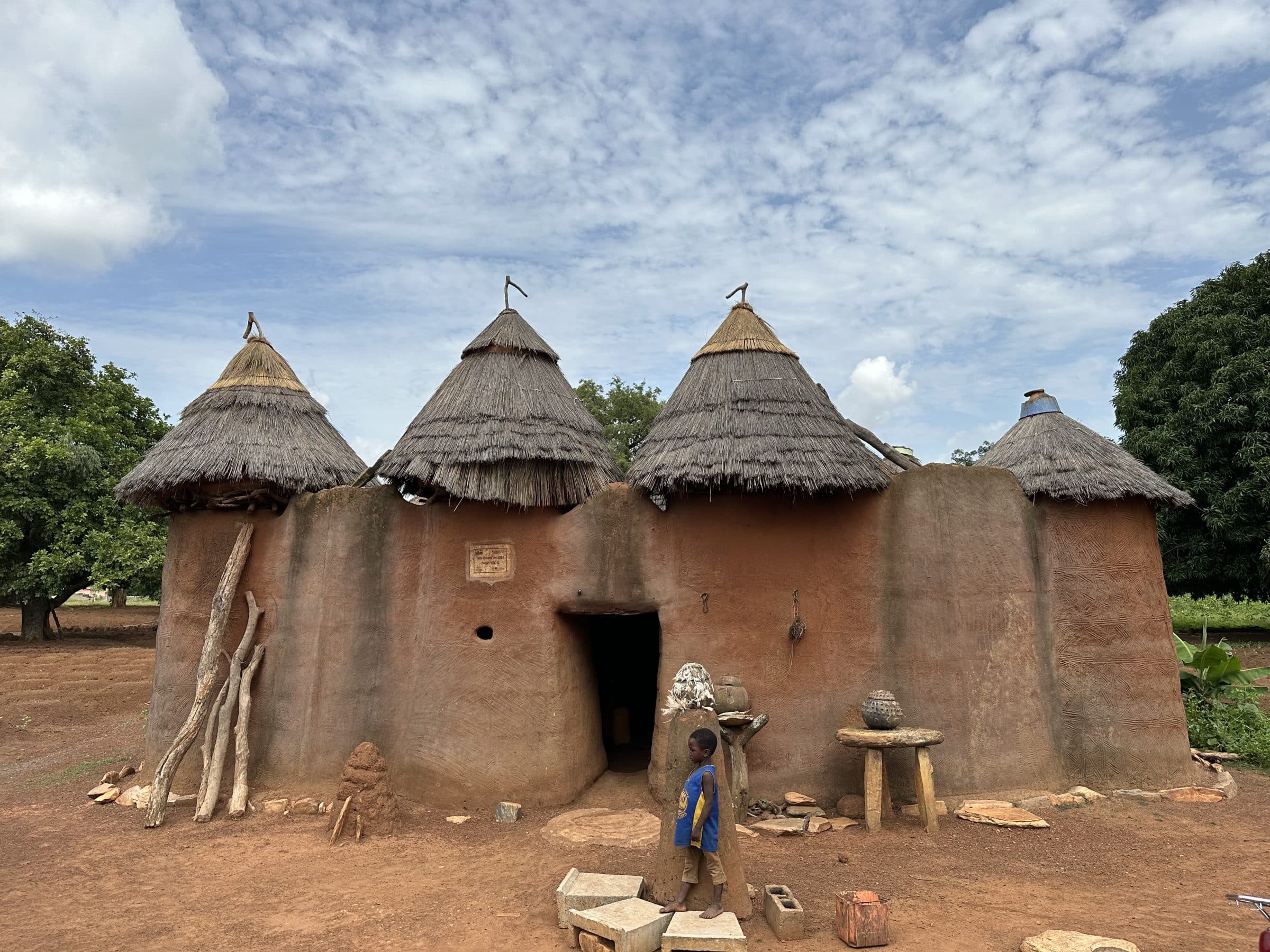
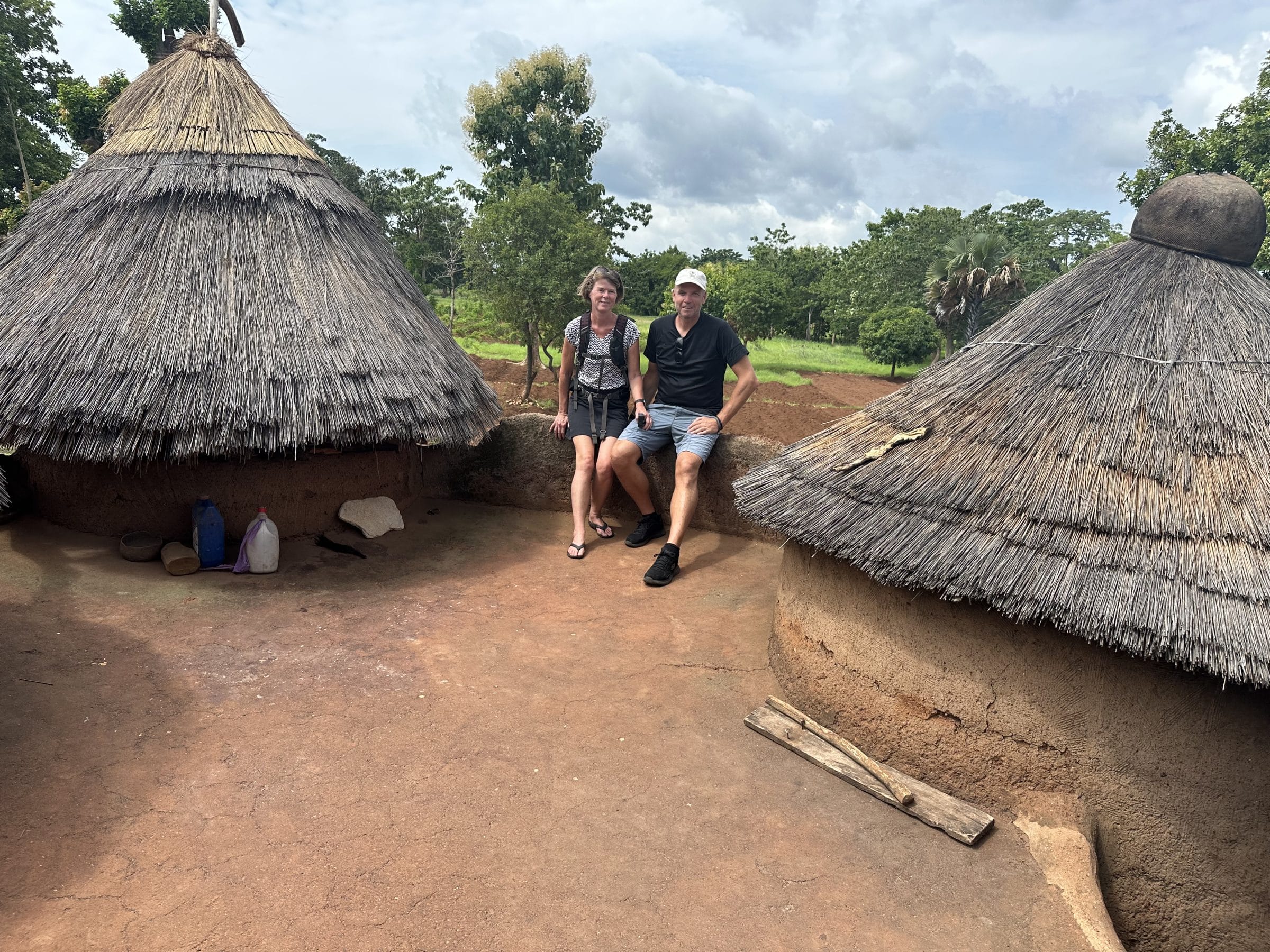
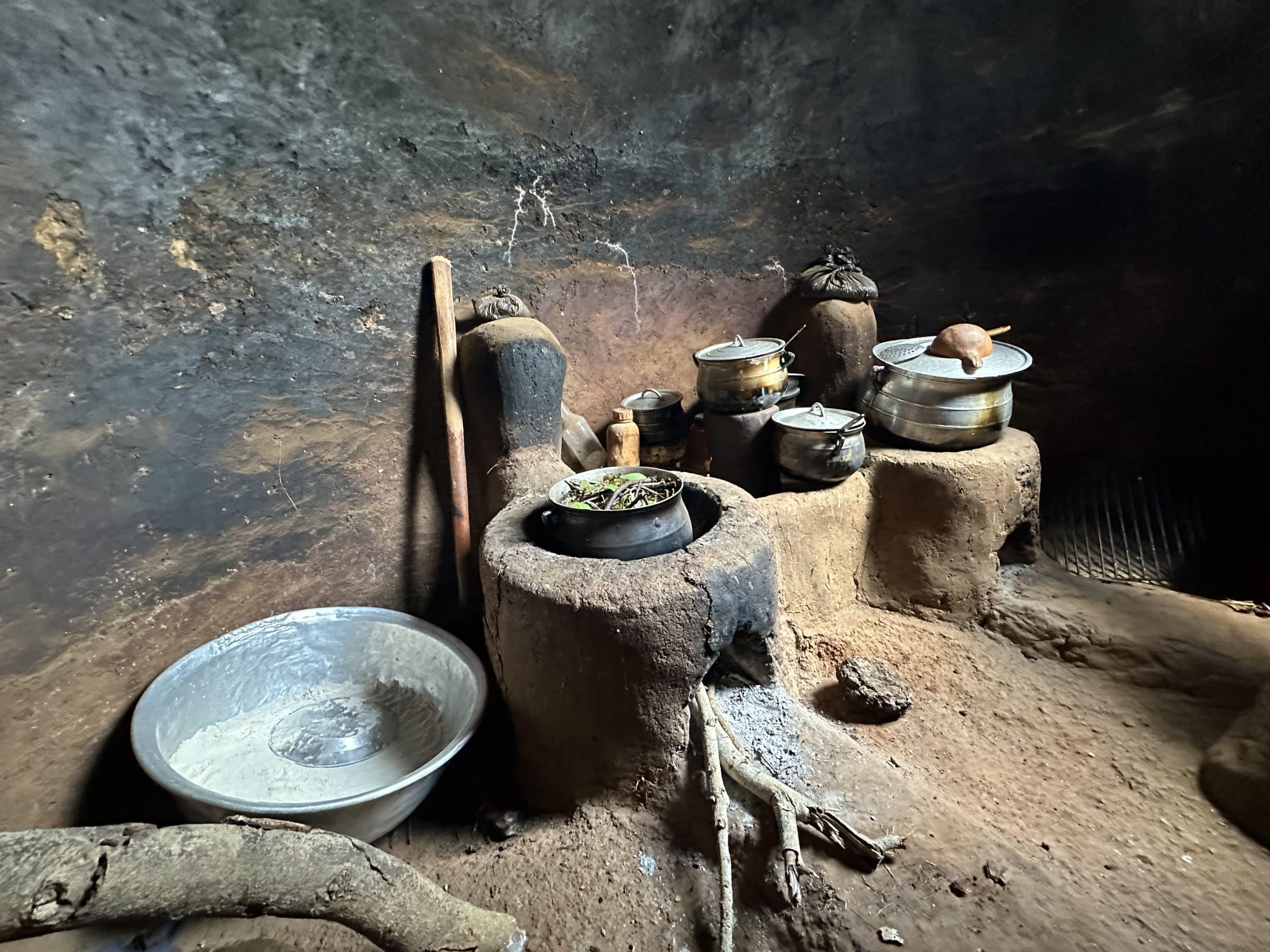
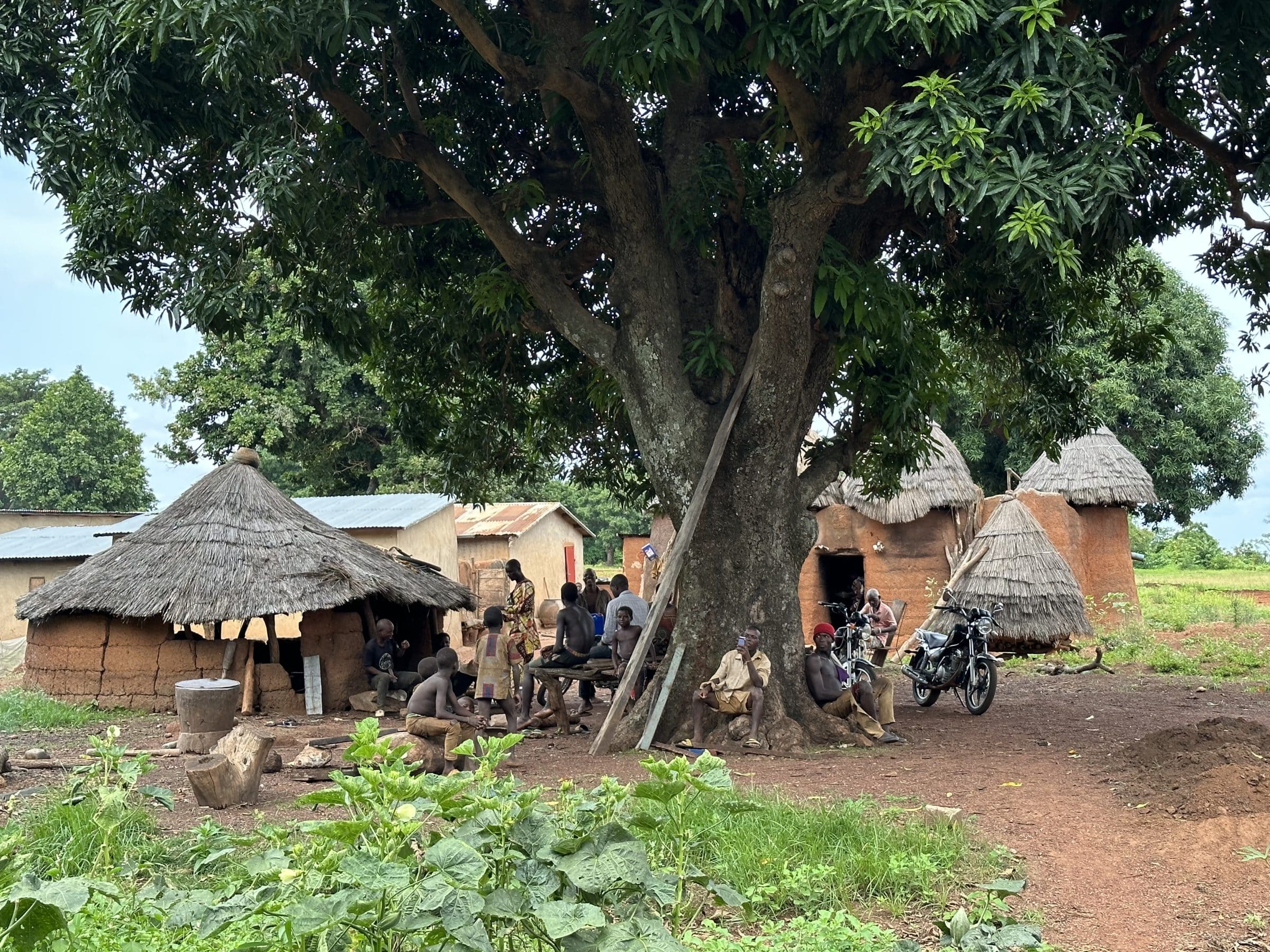
Walk through Tata area
We are not big on guides, but sometimes a guide is indispensable. Together with a difficult English speaking, but oh so friendly guide, we set off to discover part of the Tata area.
Due to unexpected rain we leave a little later than the planned 7 hours. The walk goes through dense vegetation, at first fairly steep downhill. Because of the smooth stones, you have to be extra careful. Later it becomes flatter and we see many small fields where anything and everything is grown. Here and there men, women and sometimes children are at work.
The landscape often consists of fields surrounded by large baobabs or mango trees and the houses of the farmers. Sometimes they are still traditional Tata houses.
We see a young woman walking with -get it- 15 kilos of mangoes on her head and a baby on her back to the market, 12 kilometers away! Deep respect!
A little further on we see how a heavily sweaty man plows a large field with a kind of shovel. This young man also works hard.
Finally we reach Boukombé, where we walk through the local market.
From here we take a moto-taxi back to the camper, where we take a rest.
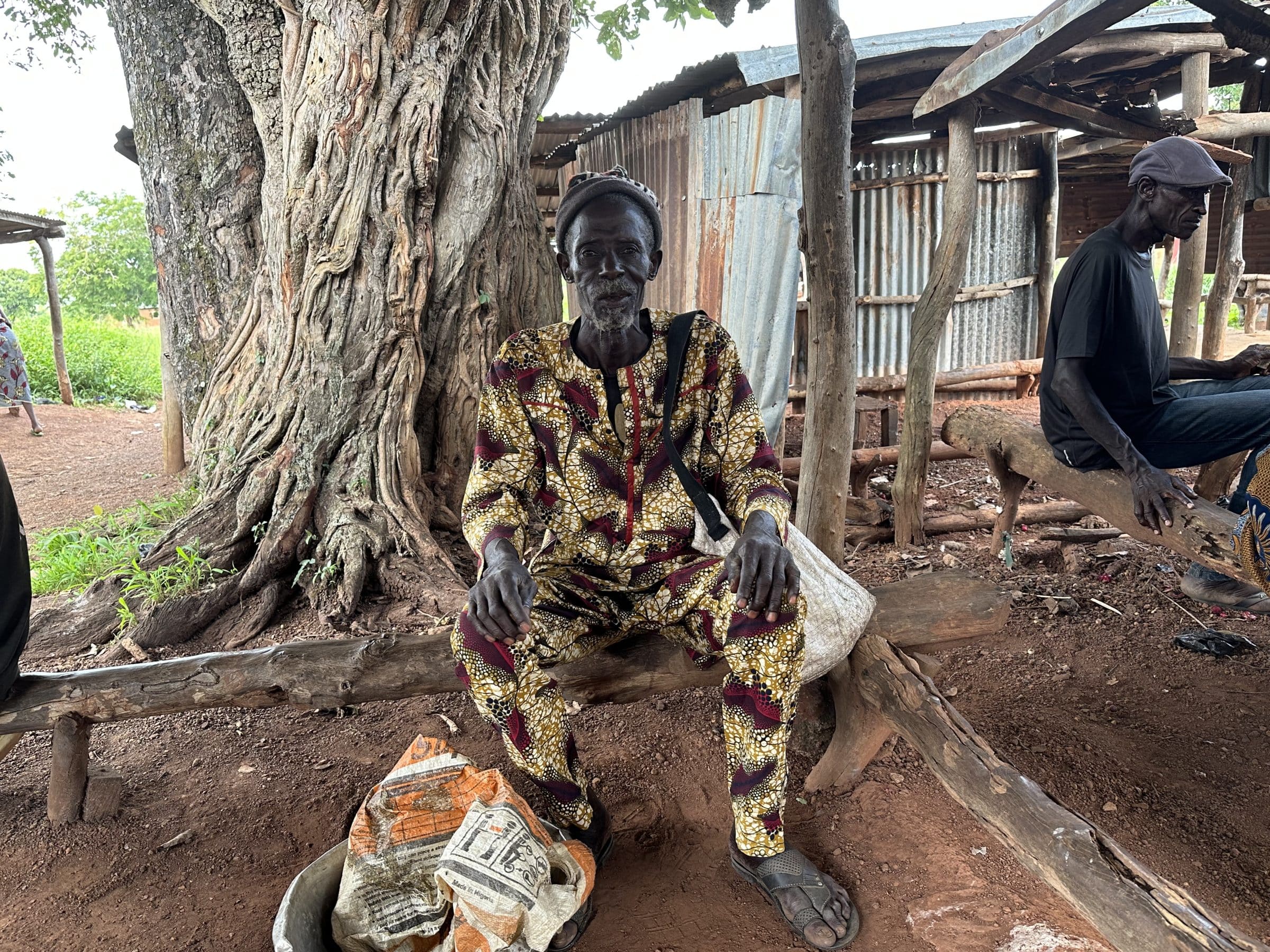
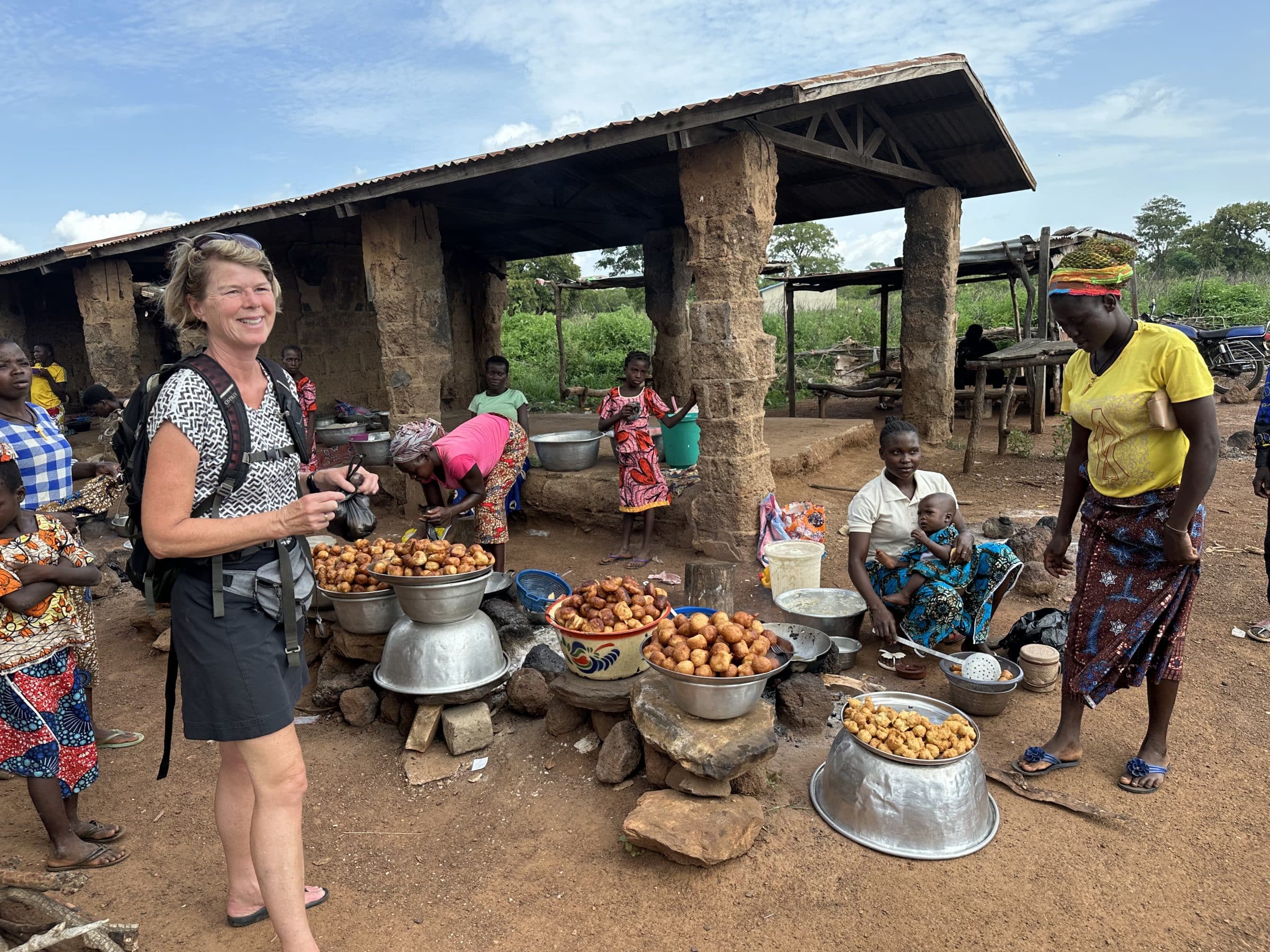
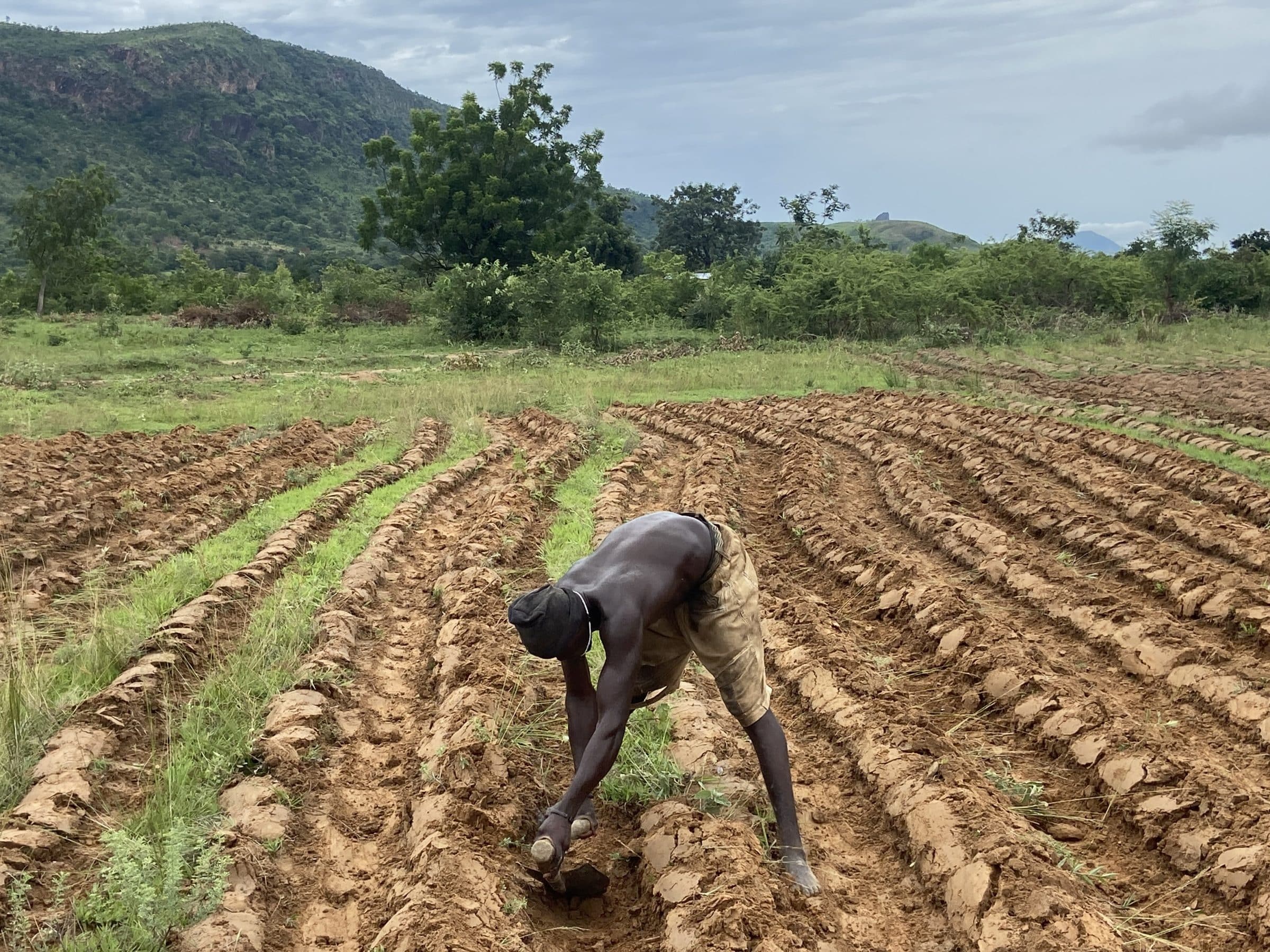
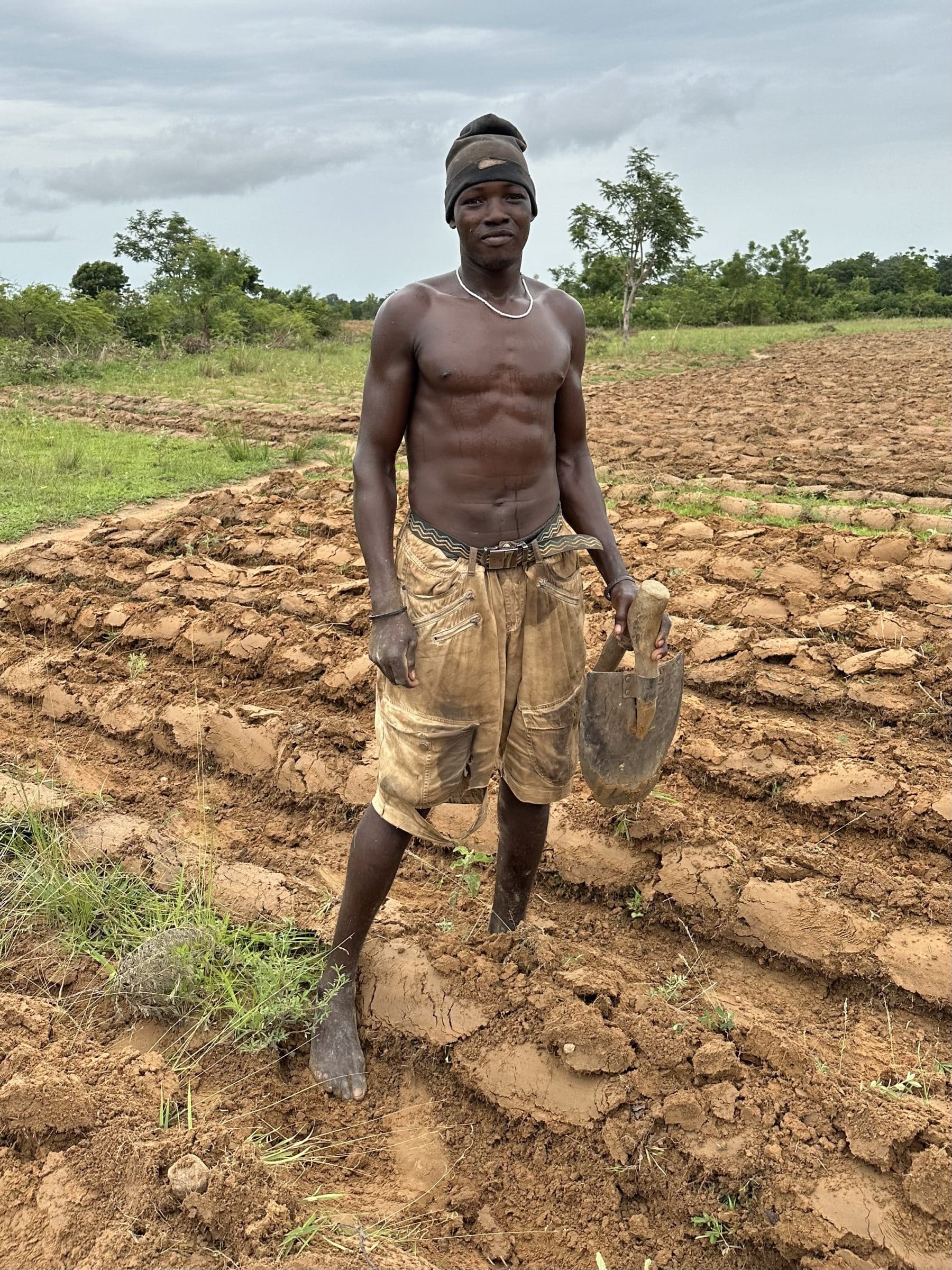
Traffic in Benin
Despite the fact that we have already had quite a journey, we continue to be amazed by the roads and vehicle fleet in West Africa.
In that sense, Benin is also memorable!
Most (main) roads in Benin are perfectly paved, executed by Chinese who in turn receive interesting trade contracts in return. They have not invested in driving lessons for the residents…. Overtaking for completely blind corners is therefore completely normal. Even truck drivers who drive around with the oldest of the oldest material can hardly climb the hills. They are therefore all heavily overloaded, leaving a huge plume of black smoke behind. Along the road it is full of stranded trucks with mostly flat tires. But we also regularly see trucks that have crashed and drivers have been unable to leave their car alive on the roadsides.
In Benin, fuel is mainly offered in bottles at small sales stands. Filling stations are very scarce in the north. And if we find one, the diesel is gone or not available at all.
On our drive south we found a suitable pump just in time - when the meter was already deep in the red.
Yes, the loading of vehicles in West Africa can also be elevated to an art in our opinion. Passenger cars carry goods on the roof, piled so high that they appear to be falling over. Mopeds are regularly occupied by 4 or 5 people, with the rear mother often carrying a baby on her back. Or they are overloaded with bags of coal or a huge box of chickens. Goats are often transported on the tank with their feet tied.
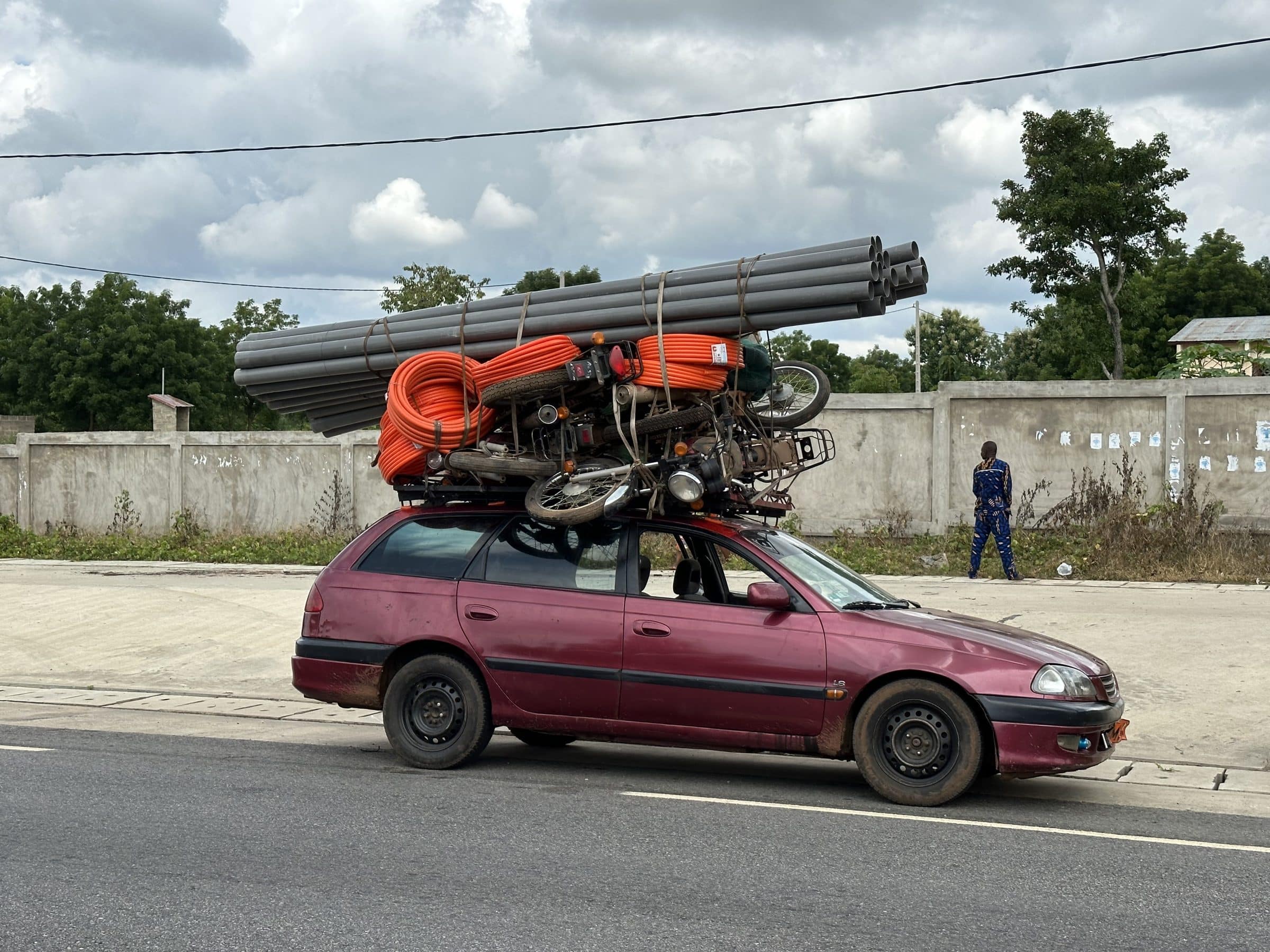
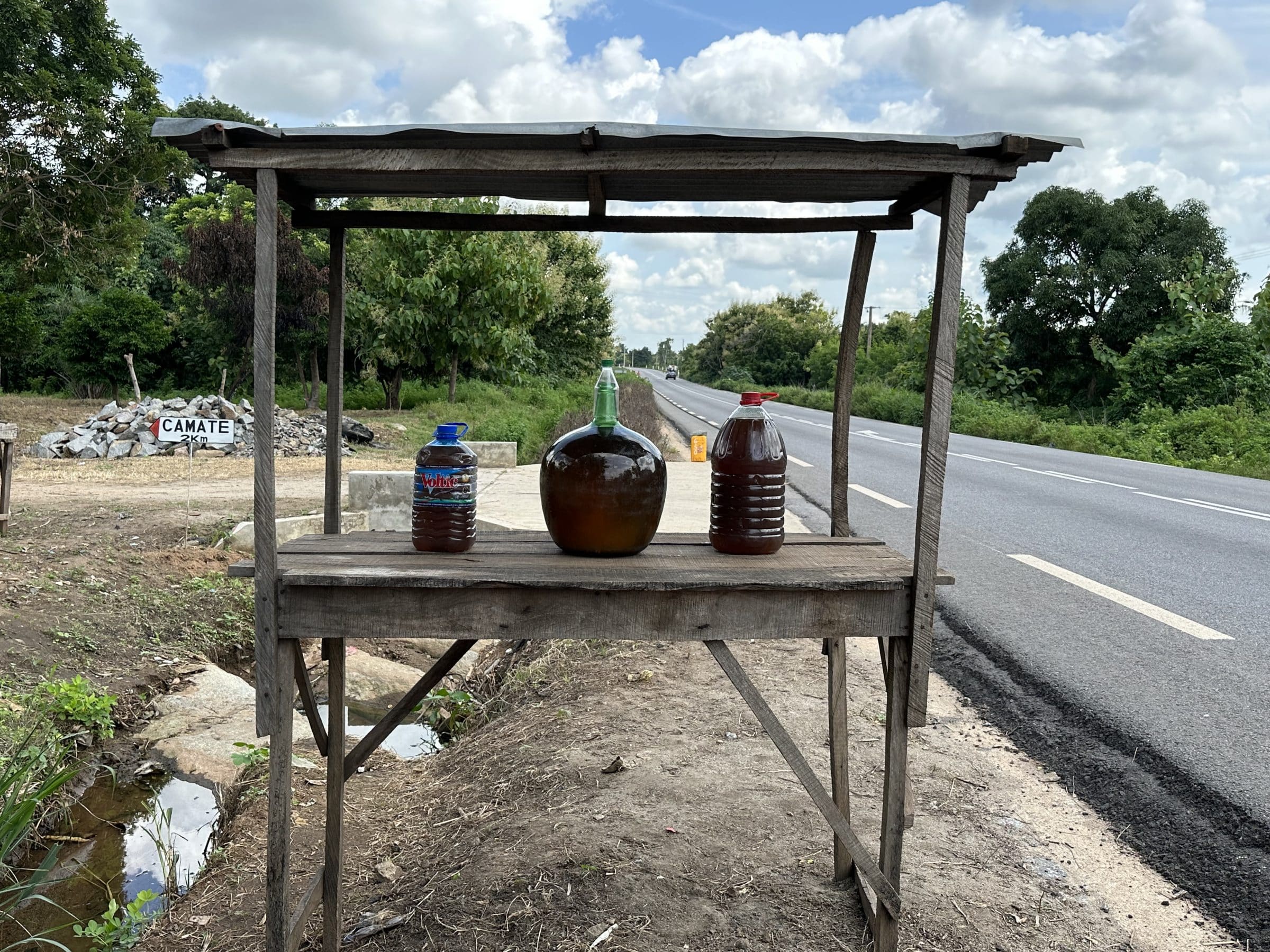
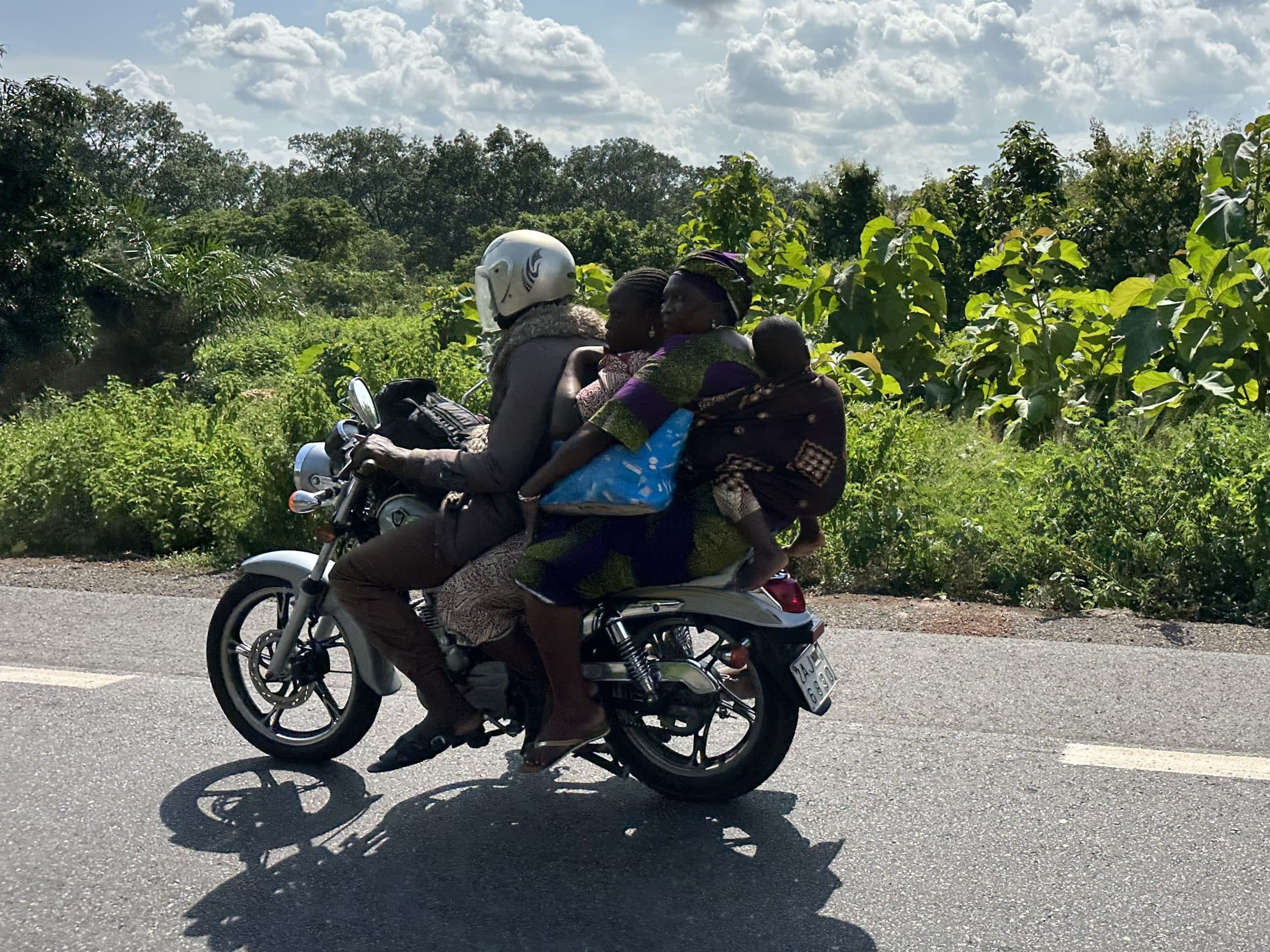
Voodoo
This brings us to the town of Abomey, where Voodoo traditions are very important for a large part of the population. We spend the night here in the parking lot of a fairly modern lodge. We get in touch with guide Marc who shows us around the town for a full day.
For us, the Voodoo culture is something new and so we let it affect us completely openly. Voodoo is a kind of religion where people don't believe in some kind of god but in the power of spirits and ceremonies. Every community has a priest where believers can put their problems. The problem can't be that big, but the priest has a solution for it. Often accompanied by the most bizarre calls and actions.
The tradition is much about birth, love, fidelity and death. Entire ceremonies are set up for this, in which believers often fall into a trance together with drumming, dance and palm wine.
We visited a priest who performed a ceremony for us. Then we visited a Voodoo church, where we were told stories about the most bizarre acts.
At the end of the afternoon we visited a fetish market. Here are sold the relics that believers have to buy from the priest in order to get rid of their problem. This often concerns the heads of monkeys, goats, dogs and panthers. But dead snakes, crocodiles and birds are also sold there.
In addition to the dead animals or parts thereof, live chickens, goats, birds, rabbits and so on are also sold. These can be offered if the priest deems it necessary. You can imagine that we have to get used to the scents on the market and this bizarre experience.
If you want to know more about Voodoo culture or fetish markets…You Tube is full of them.
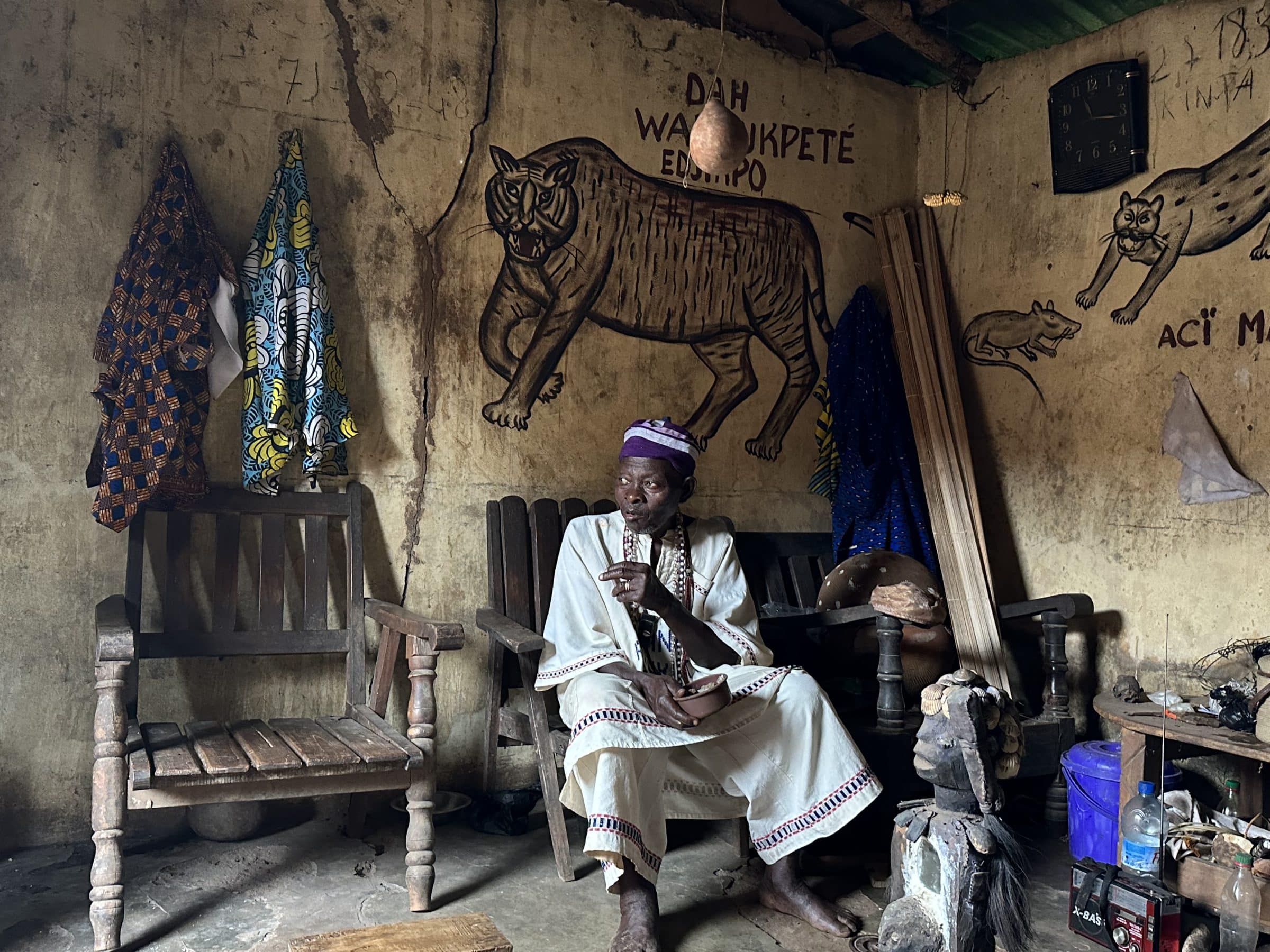
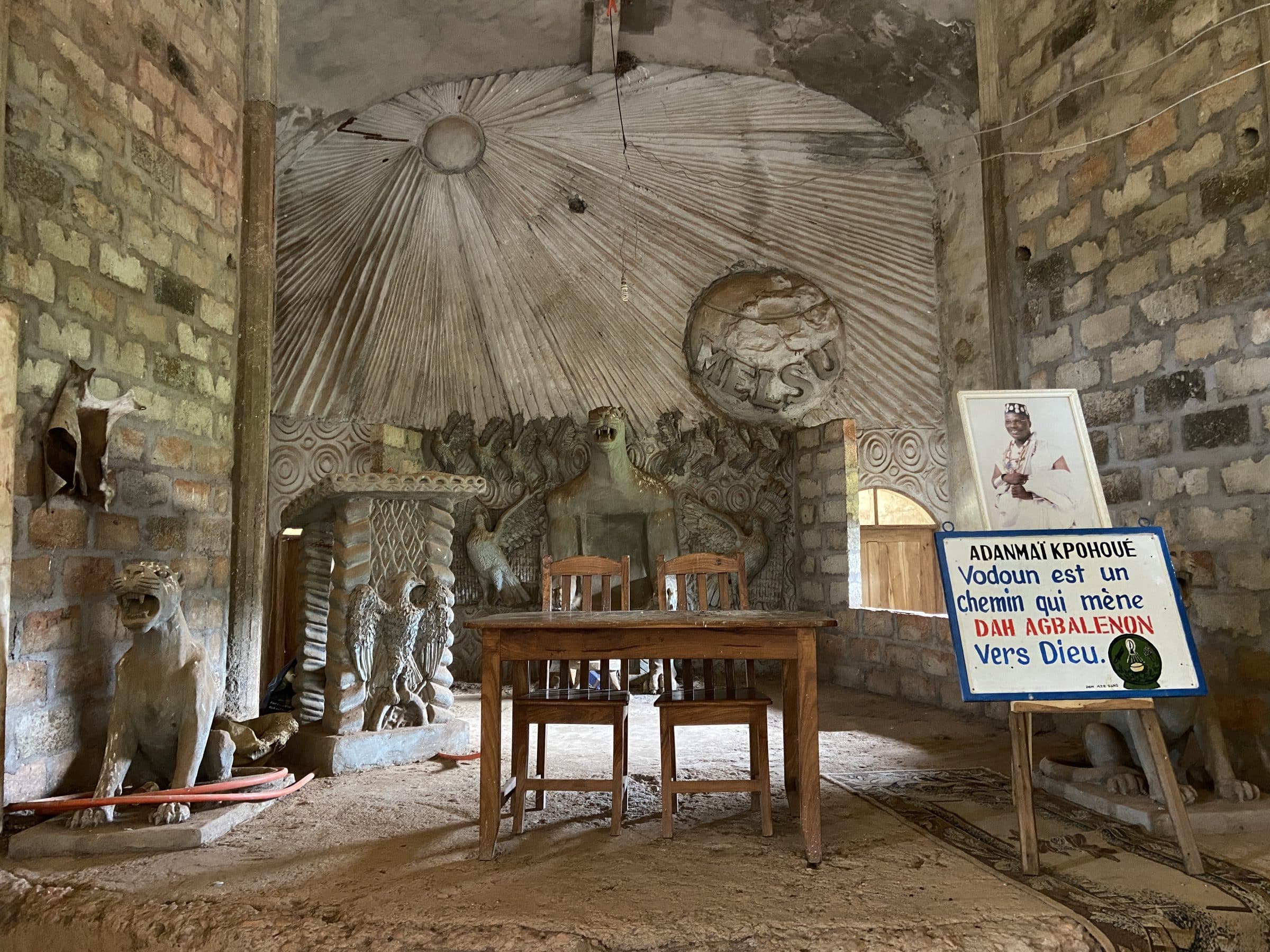
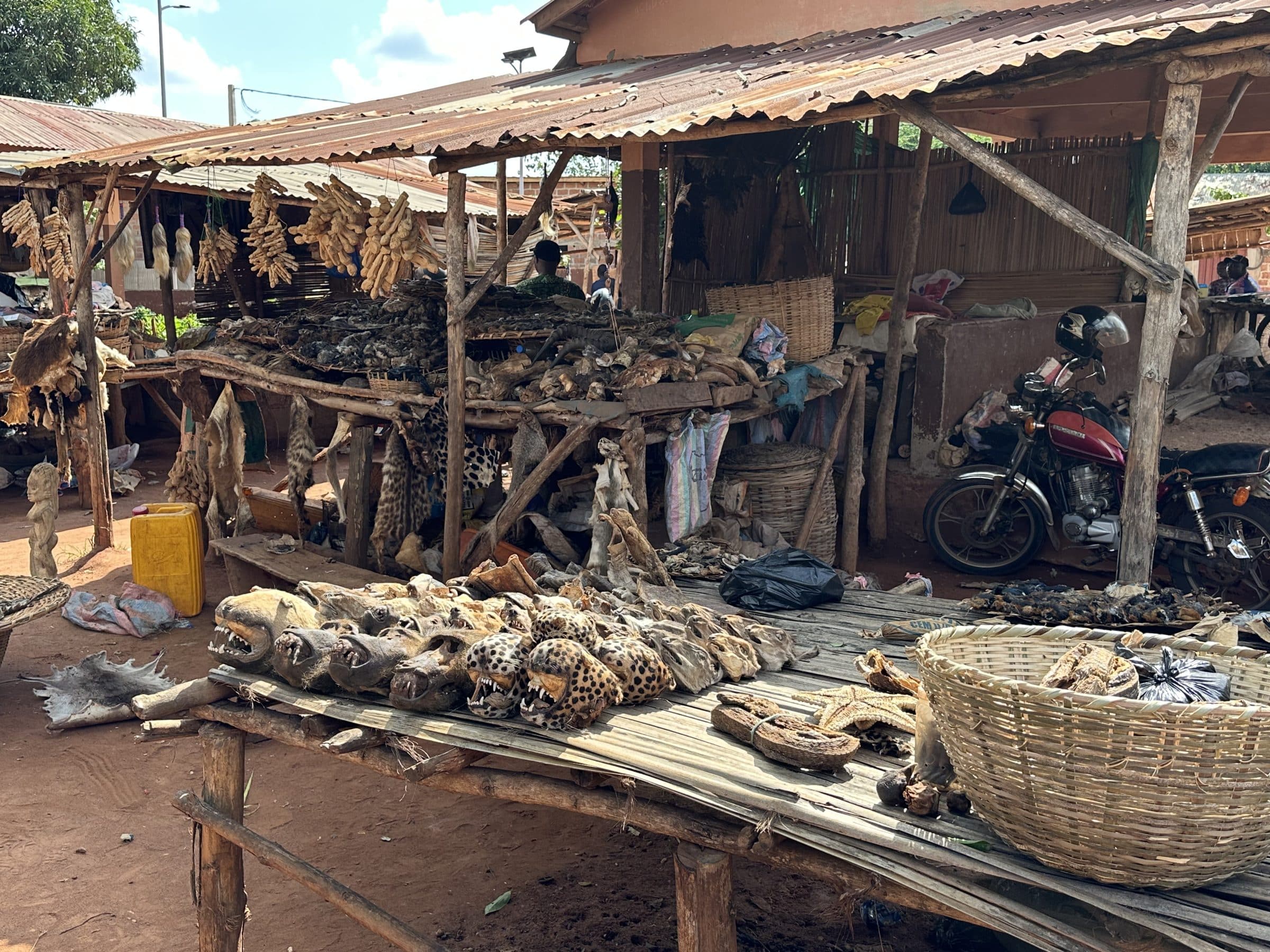
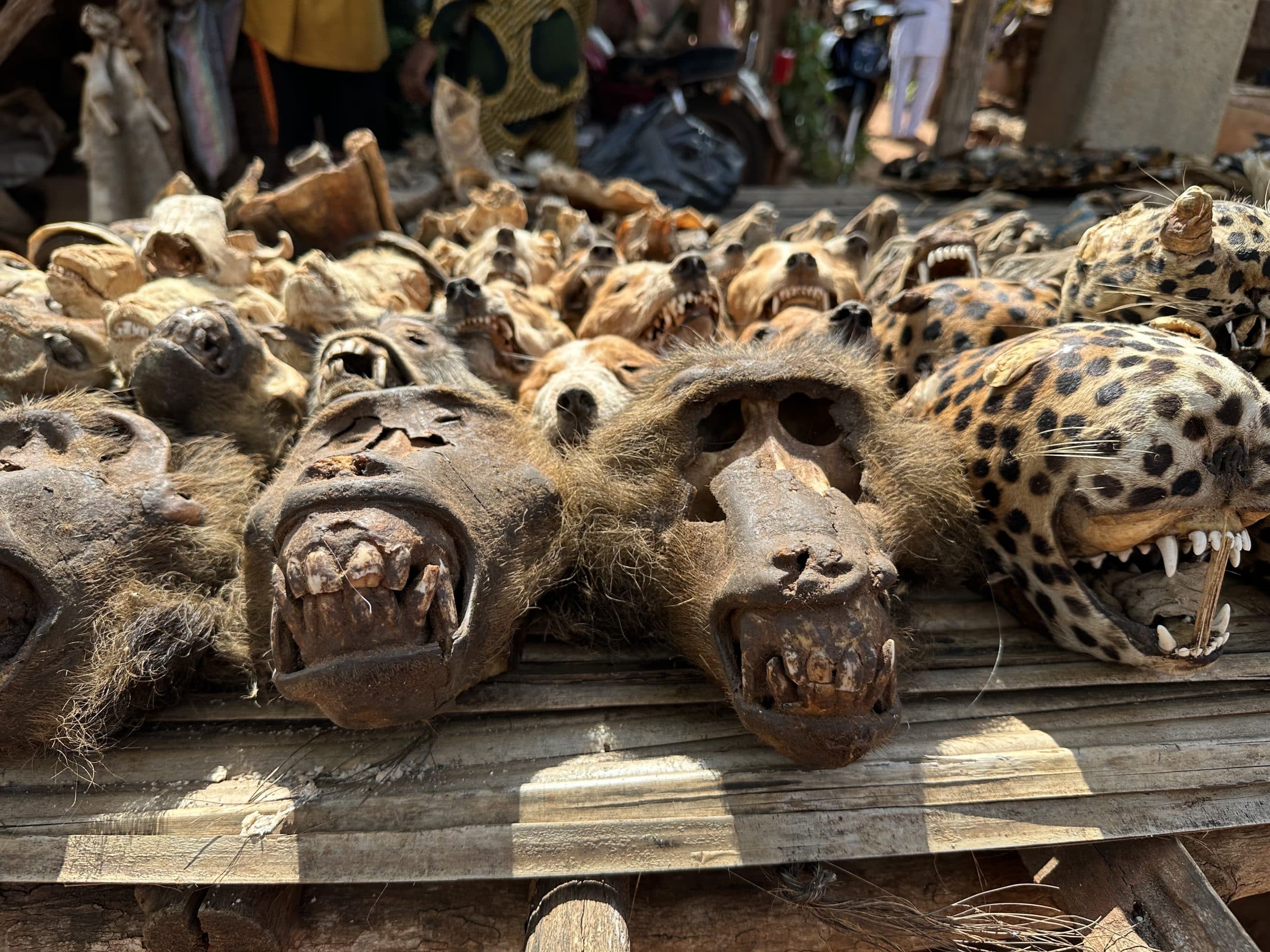
Ganvie
A visit to Ganvié is a real "must see". It is a village on stilts in a lake north of the capital Cotonou.
The village was founded about 3 centuries ago. The place was ideal to hide from “slave hunters”.
They built houses on stilts and were therefore completely safe.
Today, 35000 people live there.
We go by boat, together with a guide, on our way to Ganvié. Along the way, the guide will tell you about fishing, which is the only source of income for most families. They have multiple fishing techniques. Many shrimps and oysters are caught in the seasonal fresh/salt water.
A large part of the lake is full of palm branches stuck into the bottom. When these start to rot after about 6 months, it is food for the fish.
The tasks within a fishing family are tightly divided. For example, the man goes fishing every day and the woman sells the merchandise at the market, for which she has to paddle about 4 kilometers.
The village on stilts is under development, so we see that ancient houses are being demolished and new ones with concrete poles are being built.
For the water supply there is a well with a depth of 100 meters where the villagers can get fresh drinking water daily by boat.
Ganvié,..…often compared to Venice but in our opinion many times more authentic.
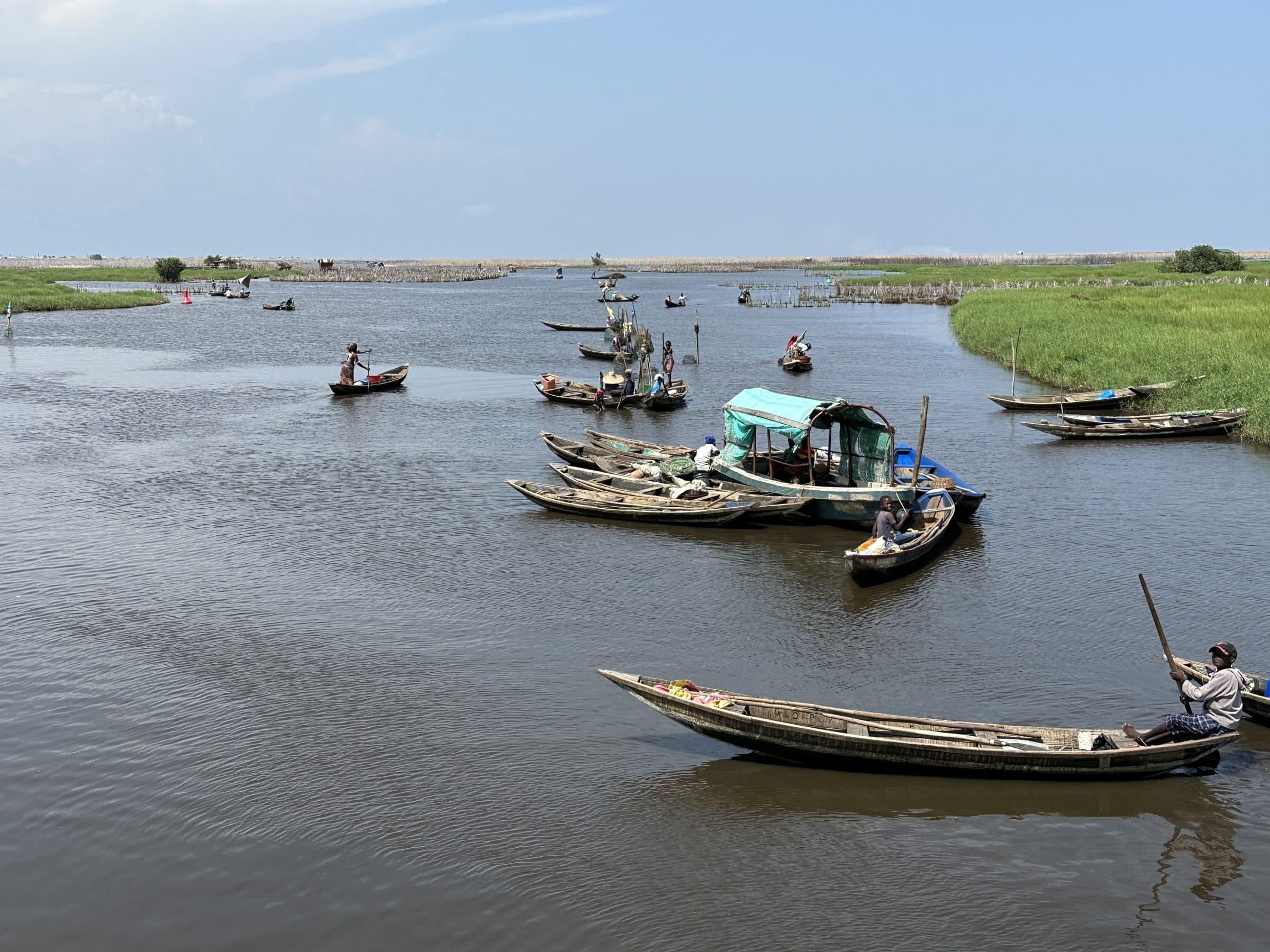
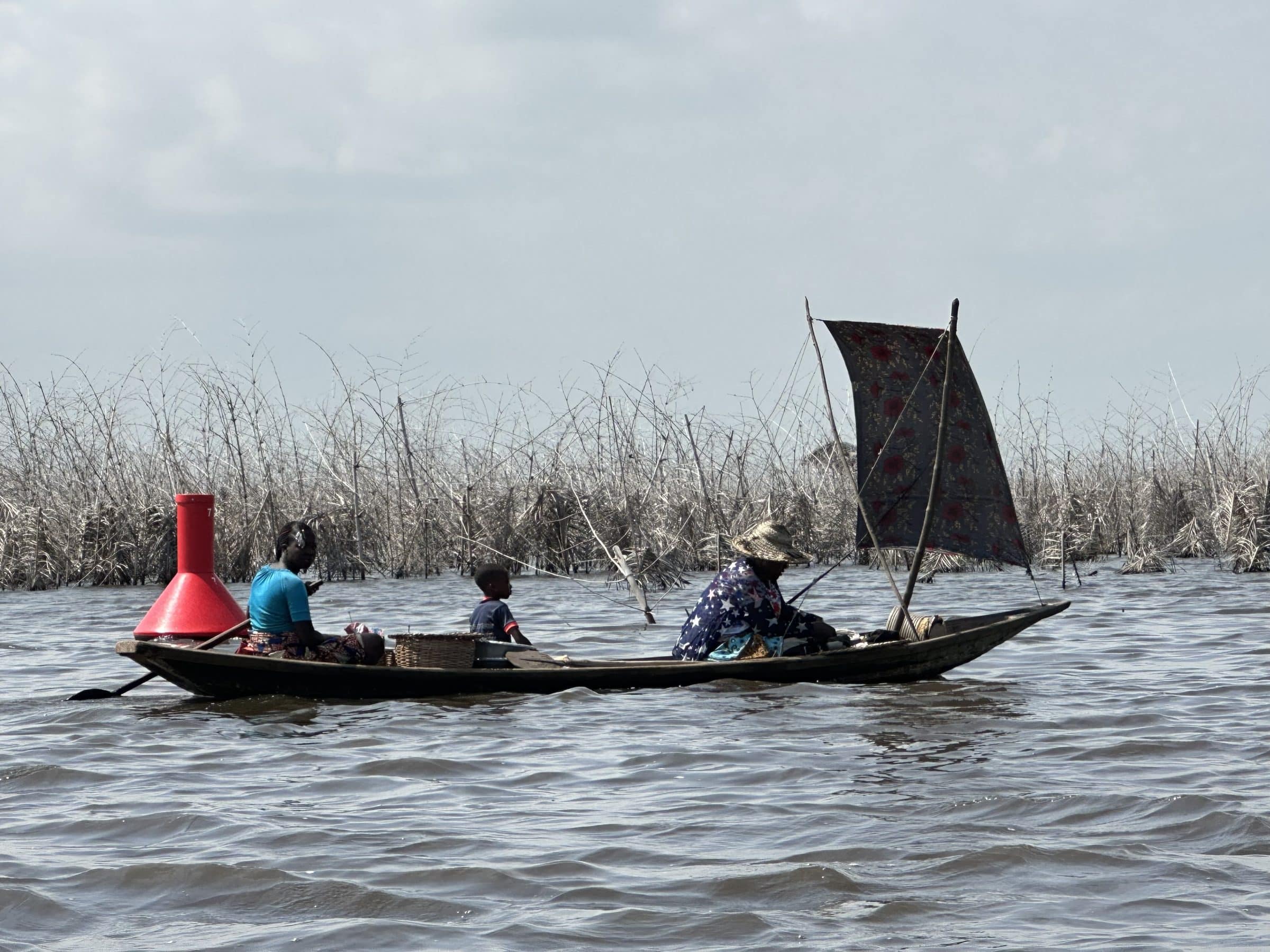
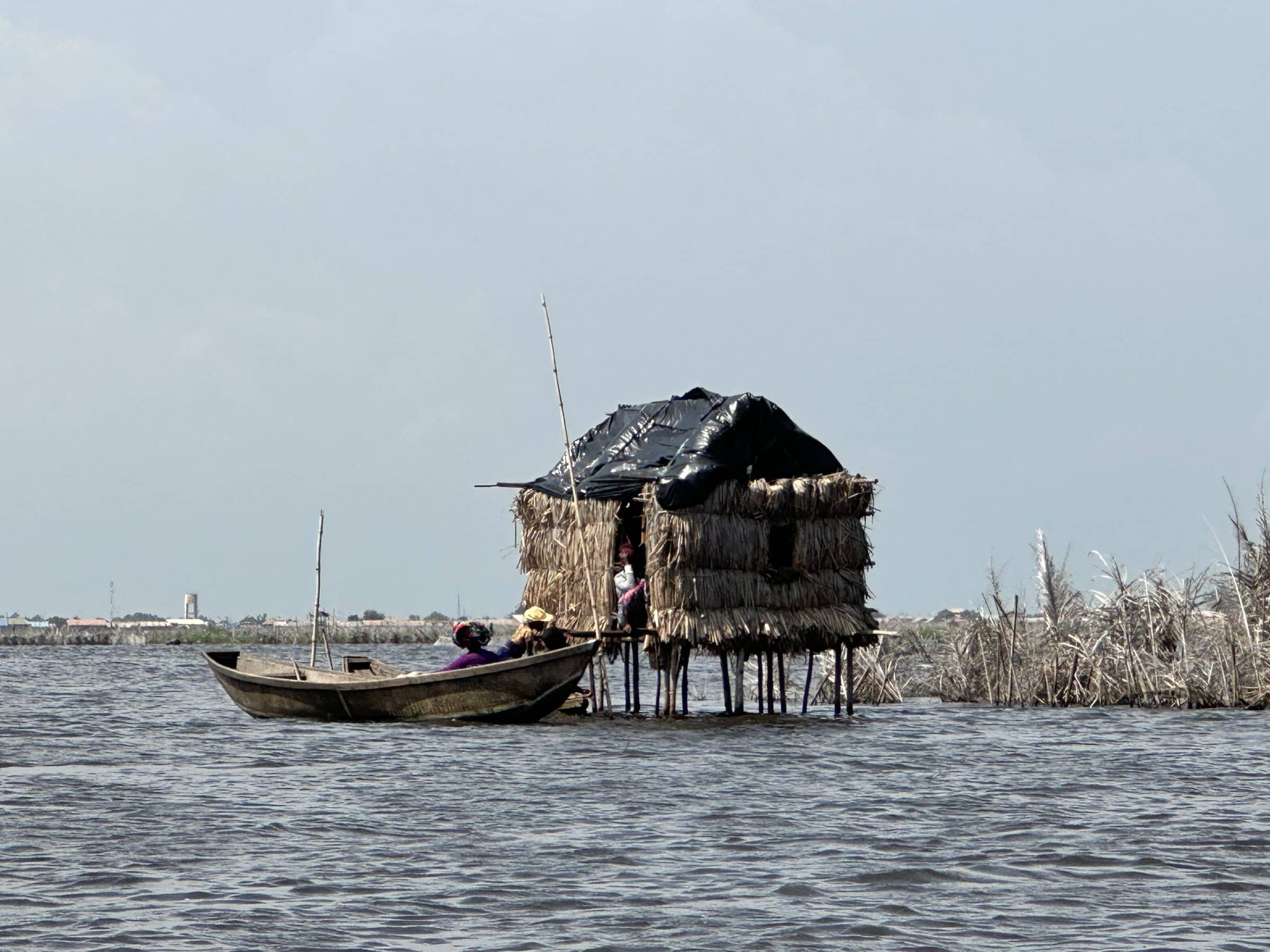
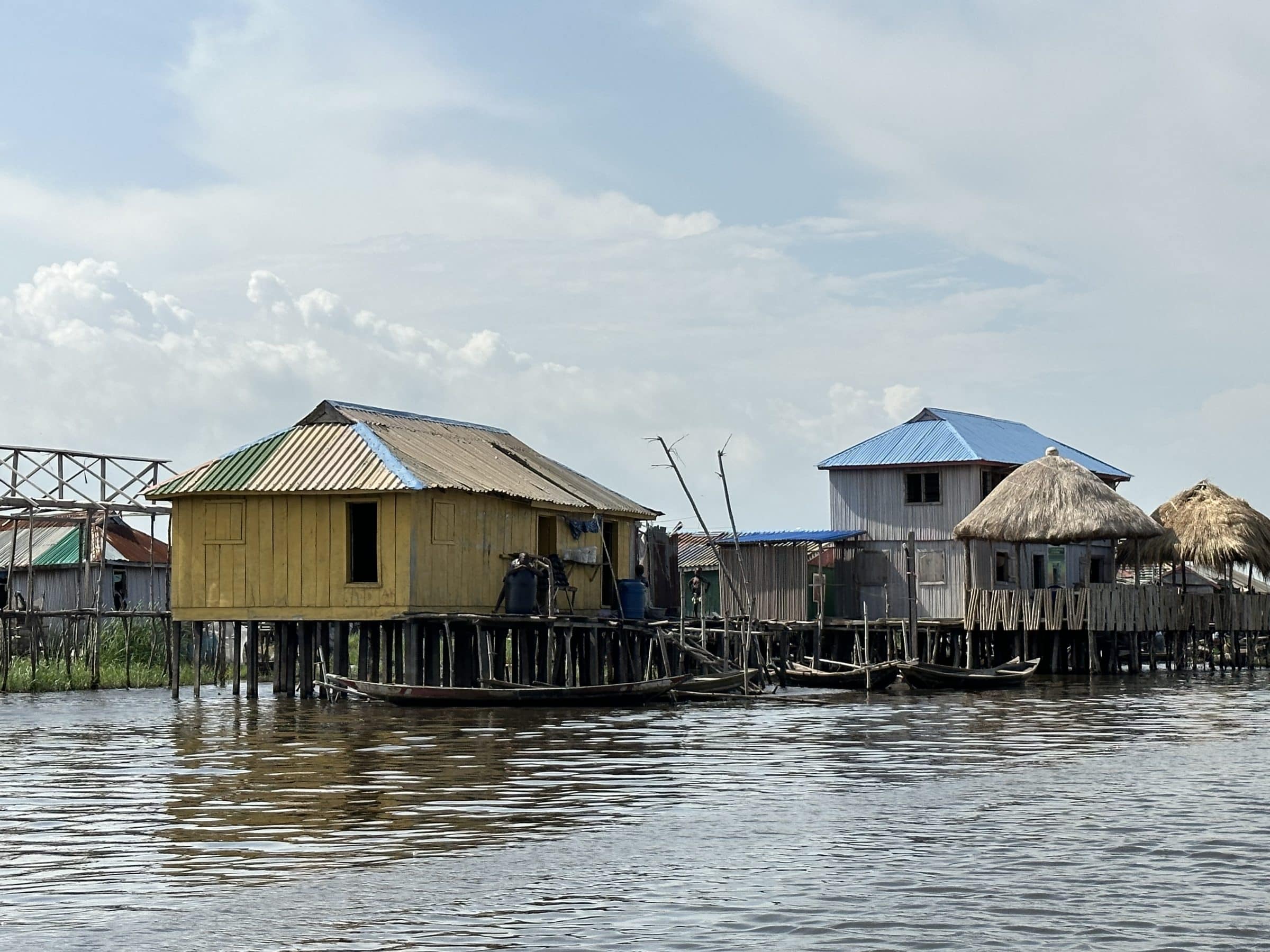
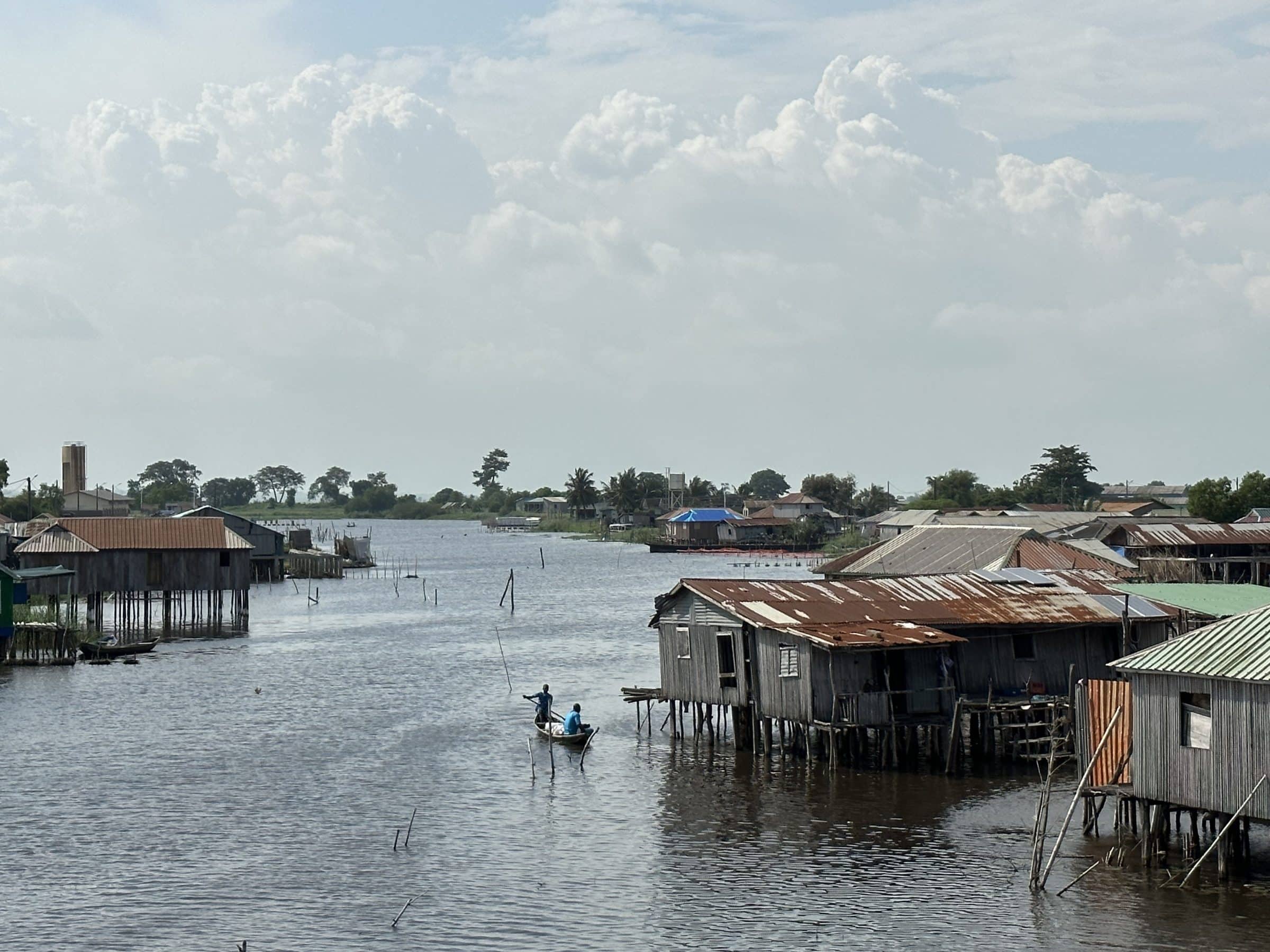
Overlanding in Togo and Benin: our conclusion
Because of the size of the countries this time together in one blog, but afterwards these countries have so much to offer that we could have easily divided it up.
We have experienced the people of both countries as very friendly. Although the people in Benin - especially in the countryside - are a bit hesitant at first.
In both countries, part of the population lives in poverty, but we also certainly see wealth around larger cities, which are located in the south in both countries.
The network of main roads varies. We saw beautifully paved wide roads, ridden by a single moped. But also roads where busy freight traffic snakes around the huge holes.
The interior is characterized by a lot of greenery, small farmers with small fields, largely self-sufficient.
Also very striking was the beauty of both countries. We were used to the large amount of rubbish along the streets in many other West African countries. Benin and Togo show that things can be done differently.
The Voodoo culture is prominent in Benin. Partly because of this and a number of other highlights, a visit to Benin is definitely worth it, with a visit to Togo as icing on the cake.
Plan your holiday to Africa here
- Itineraries you can compare + request quotes Africaplus, Africa tailor-made, Djoser, king monkey, rickshaw travel, sawadee en shoestring.
- Flight tickets for Africa you book through Skyscanner.
- Hostels, Hotels and Resorts in Africa you book Booking.com.
- Rental cars : Sunnycars en rental cars.
- Tours and Activities in Africa you book through GetYourGuide.
- travel items such as suitcases, bags and more you can buy at Bol.com.
- SIM cards for Africa you buy extra International sim.
- Parking at the airport you can arrange via Parkos, park care of iParking.



